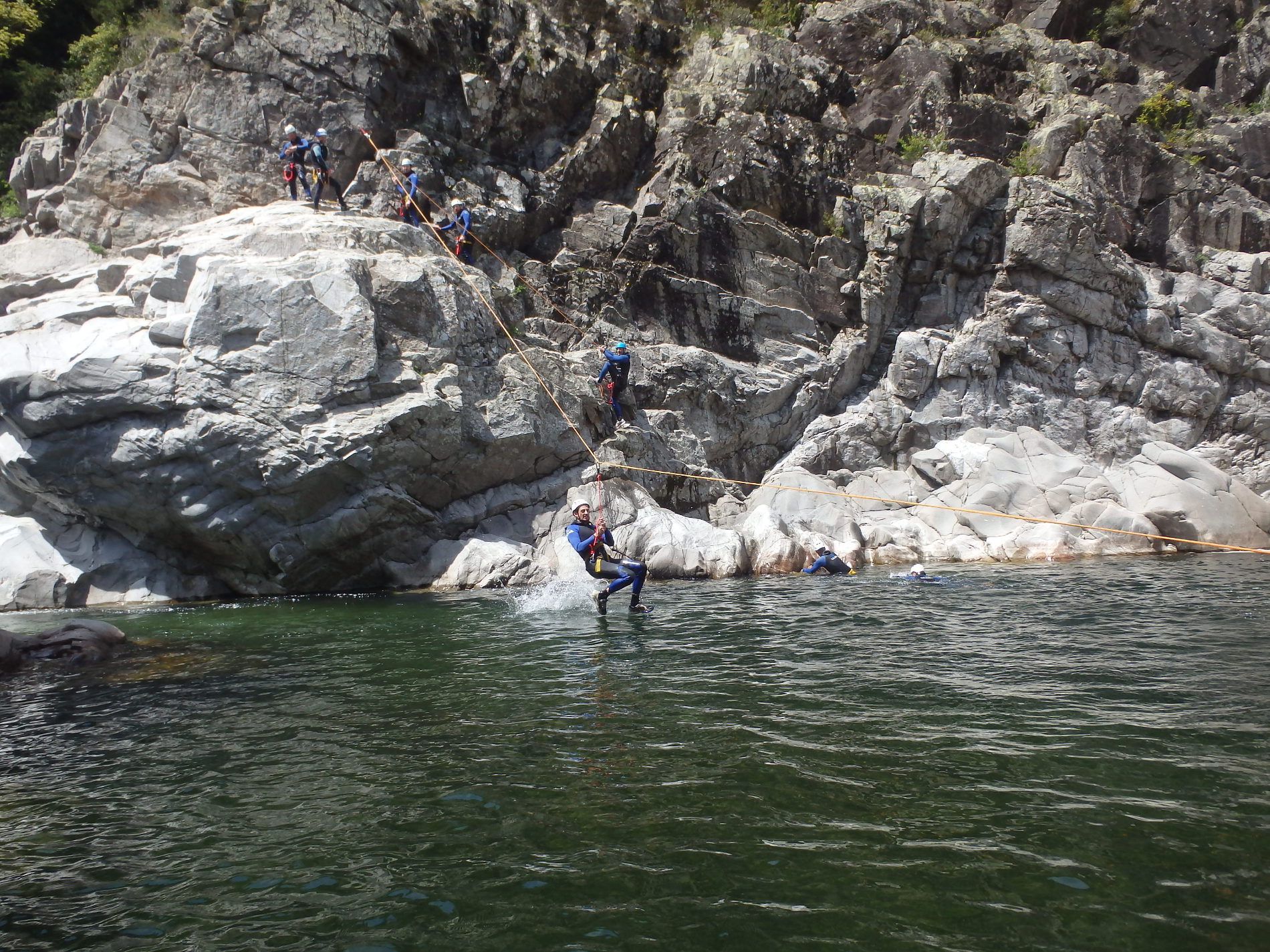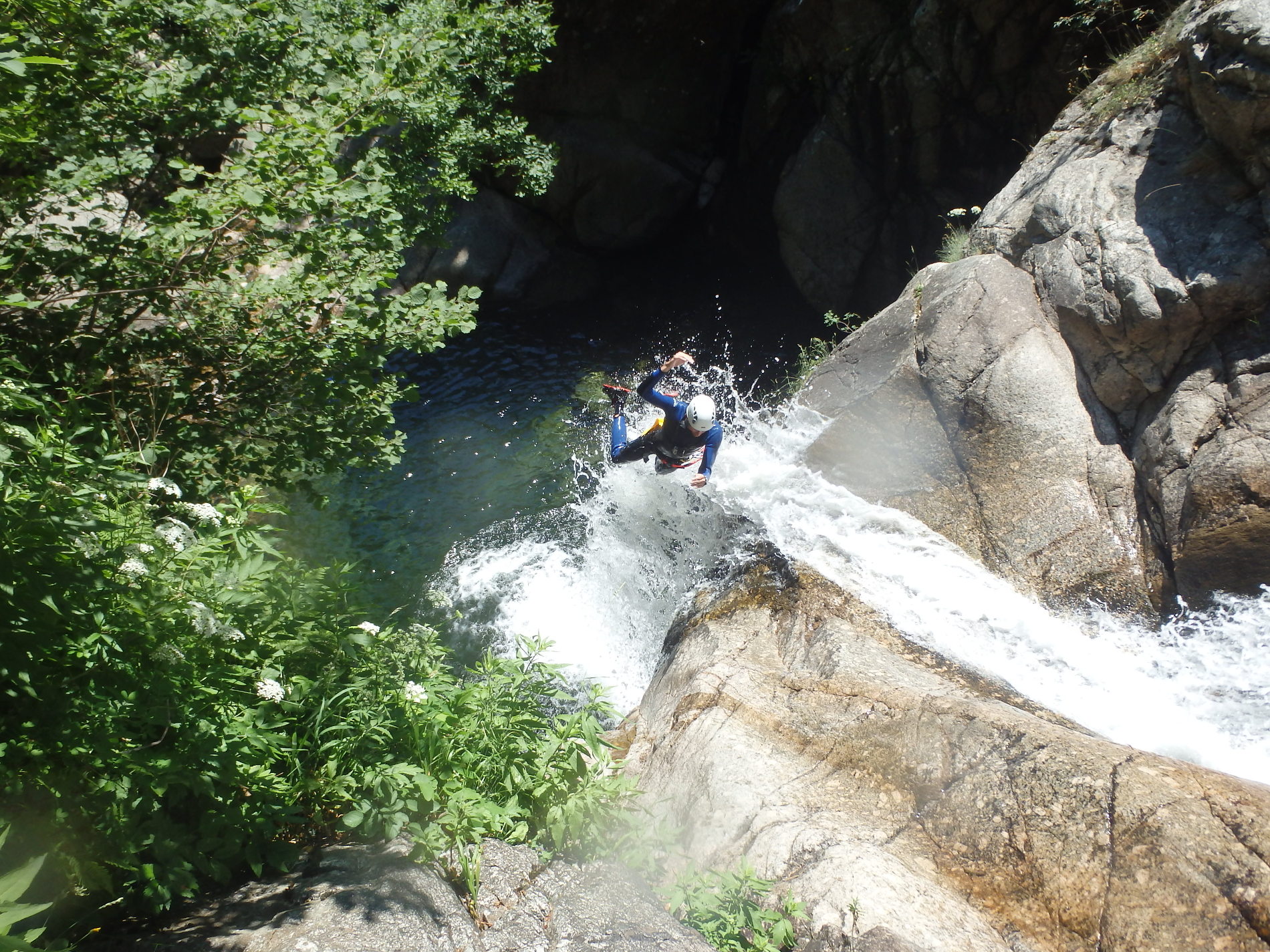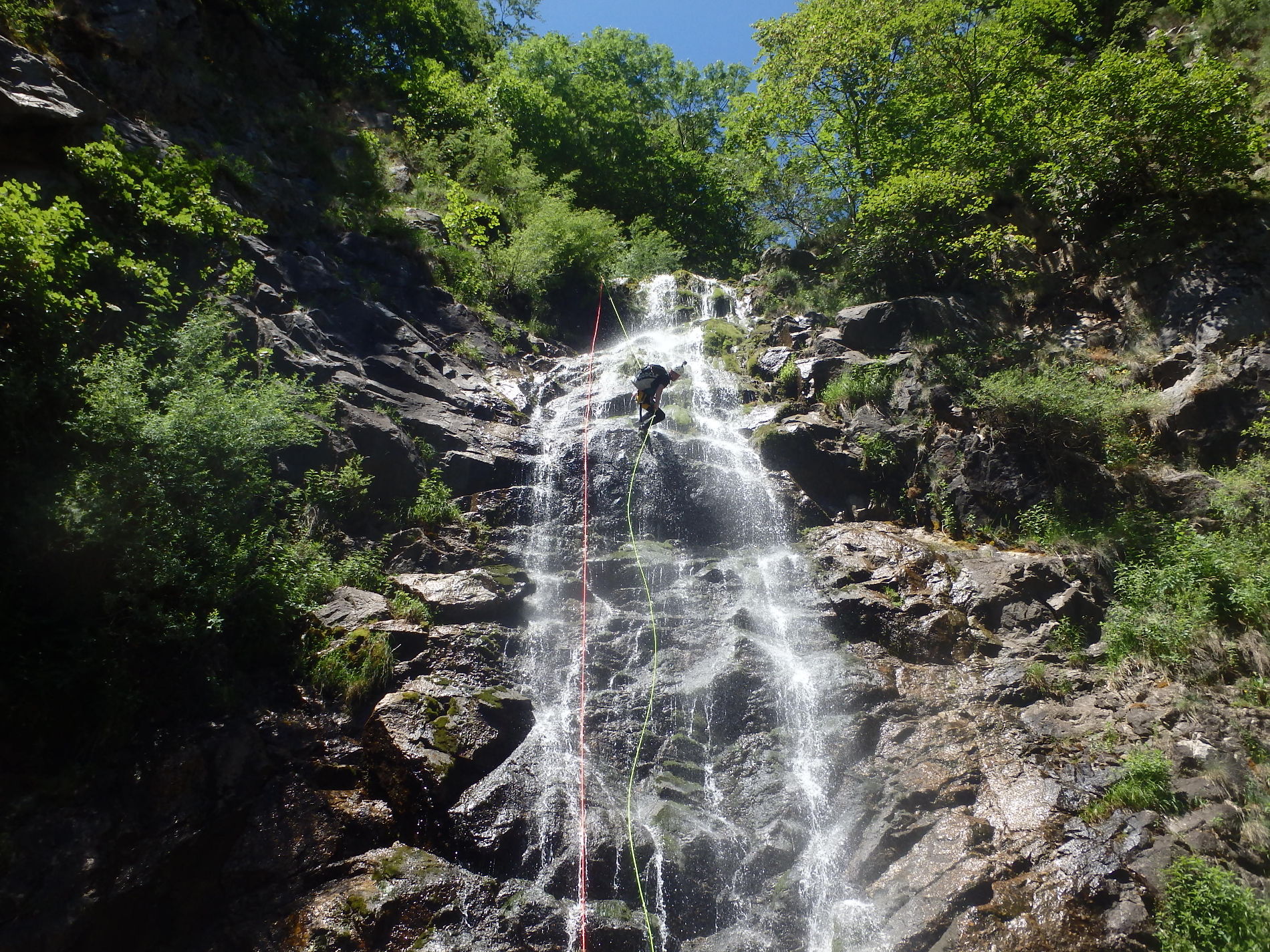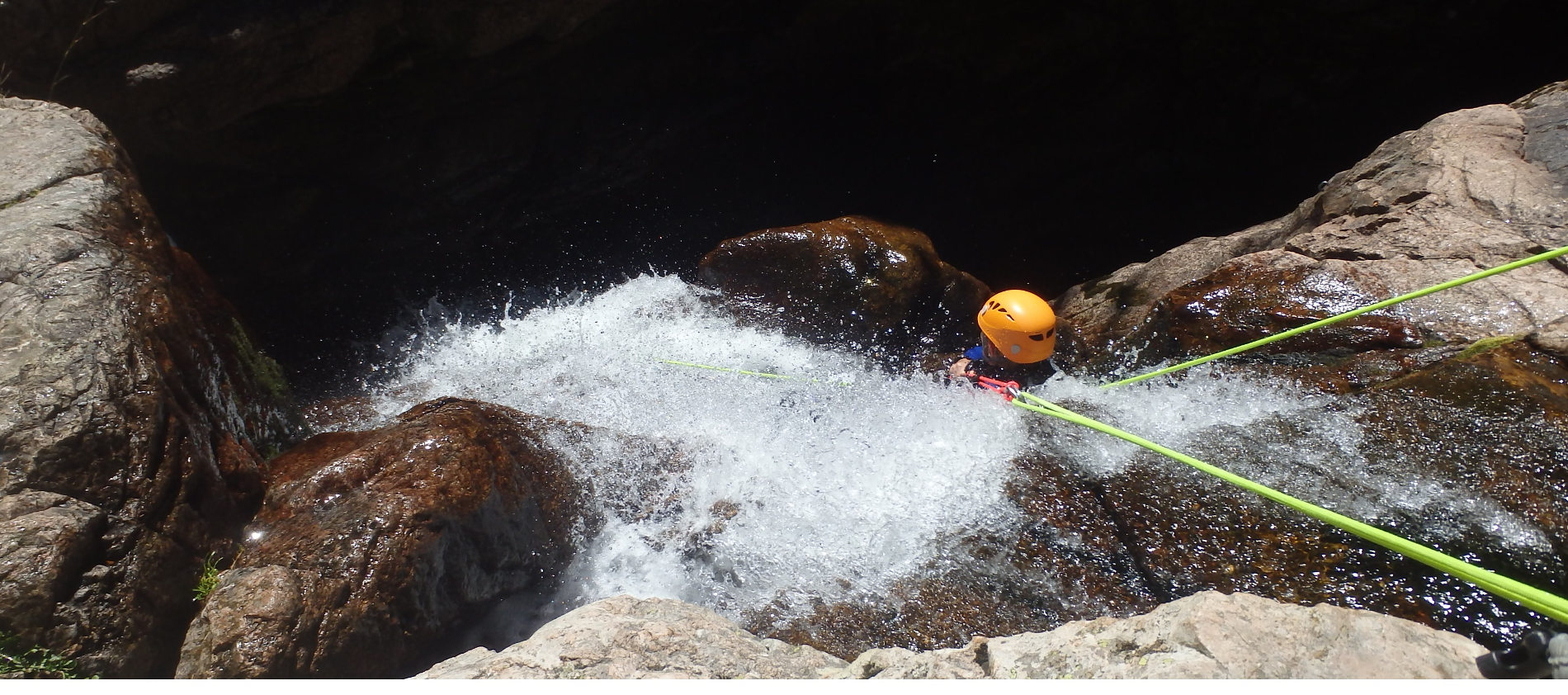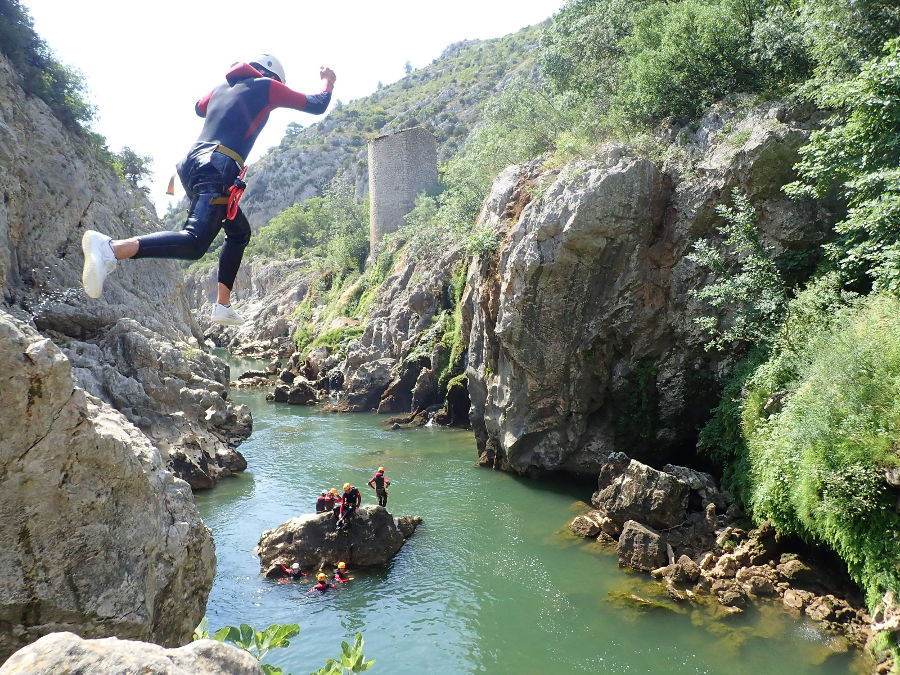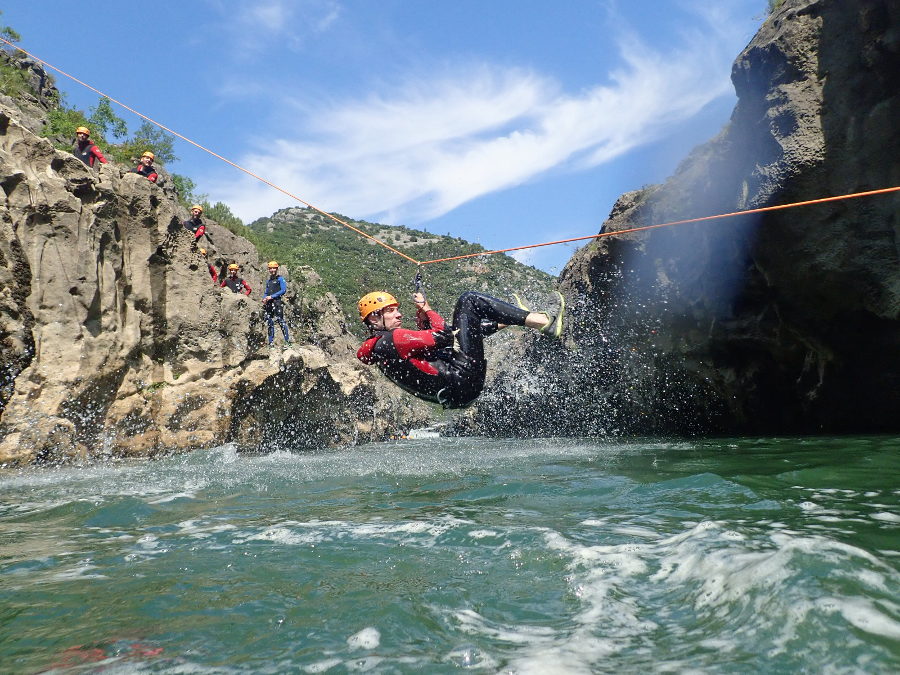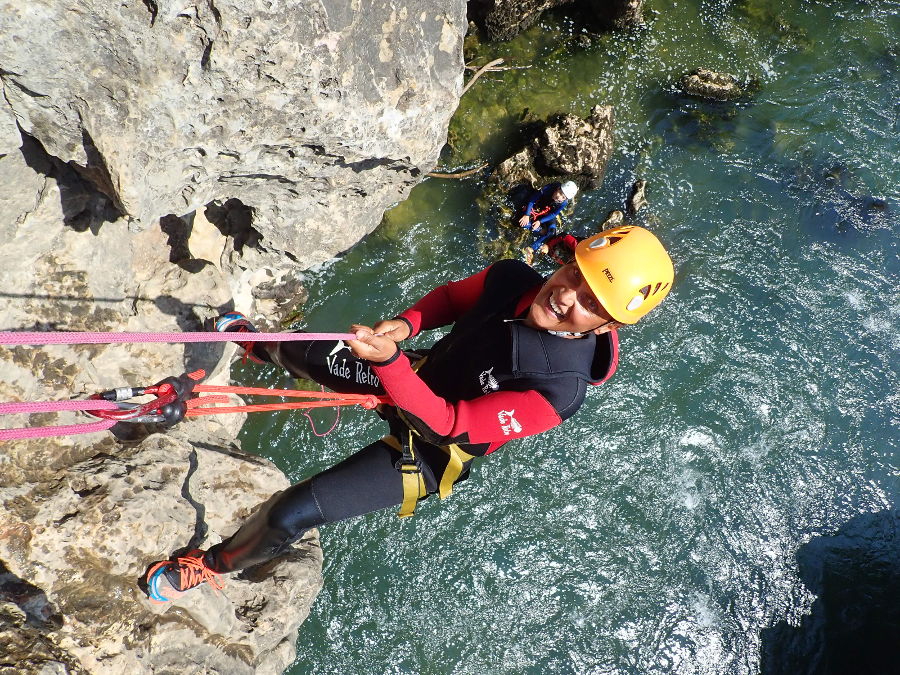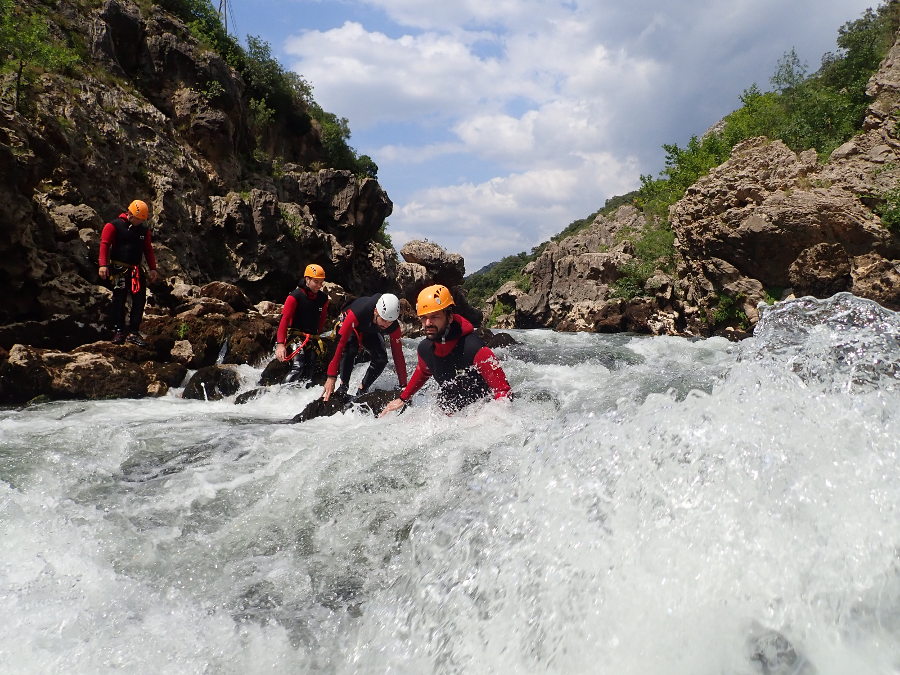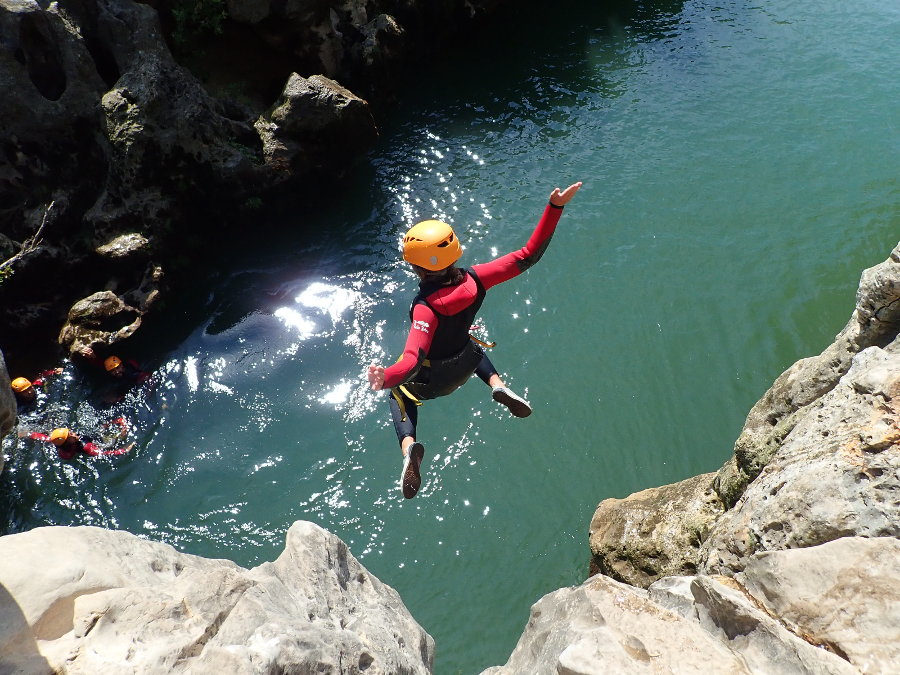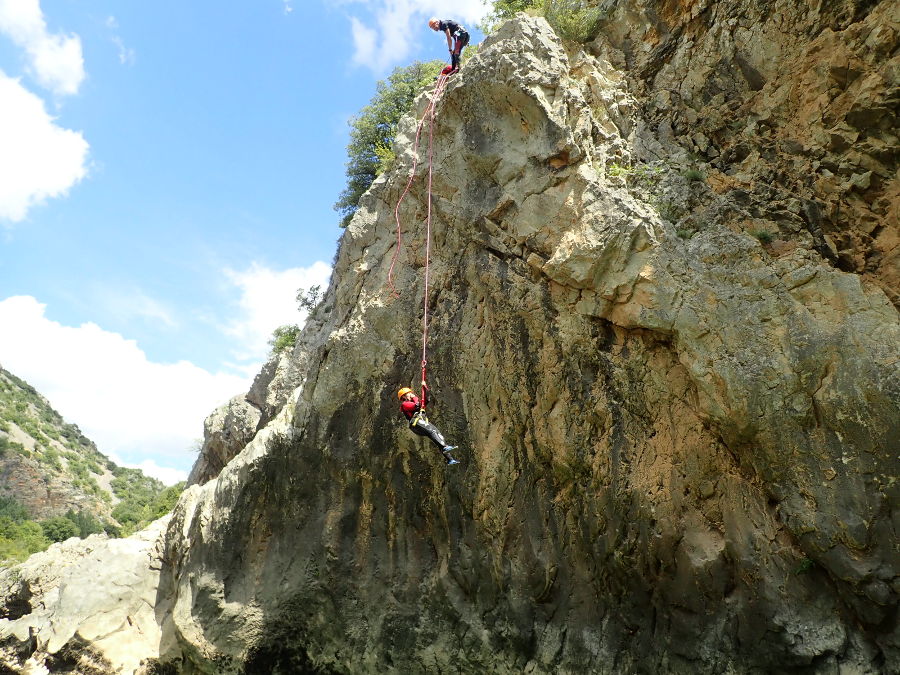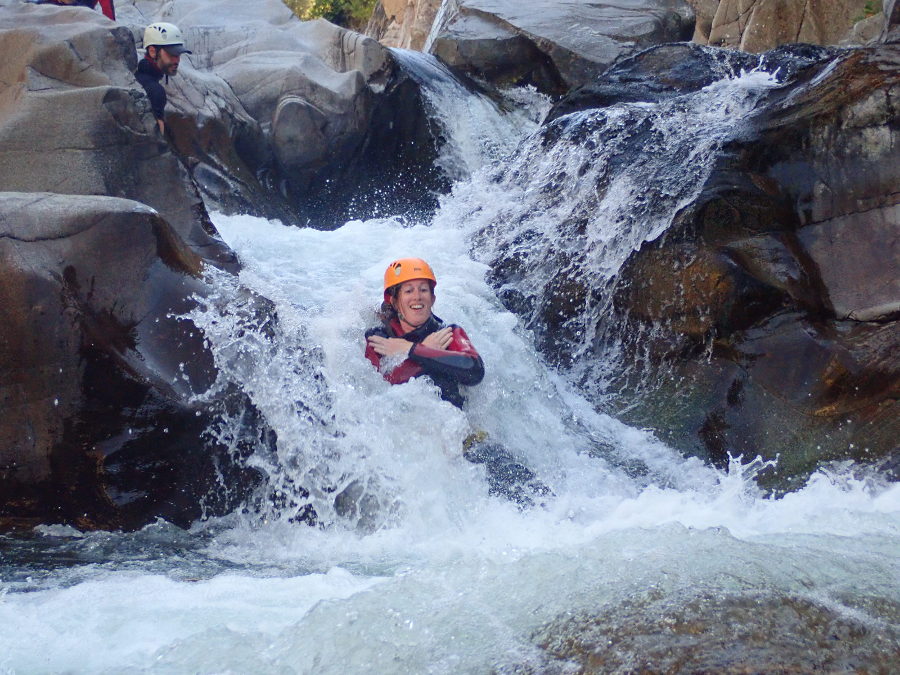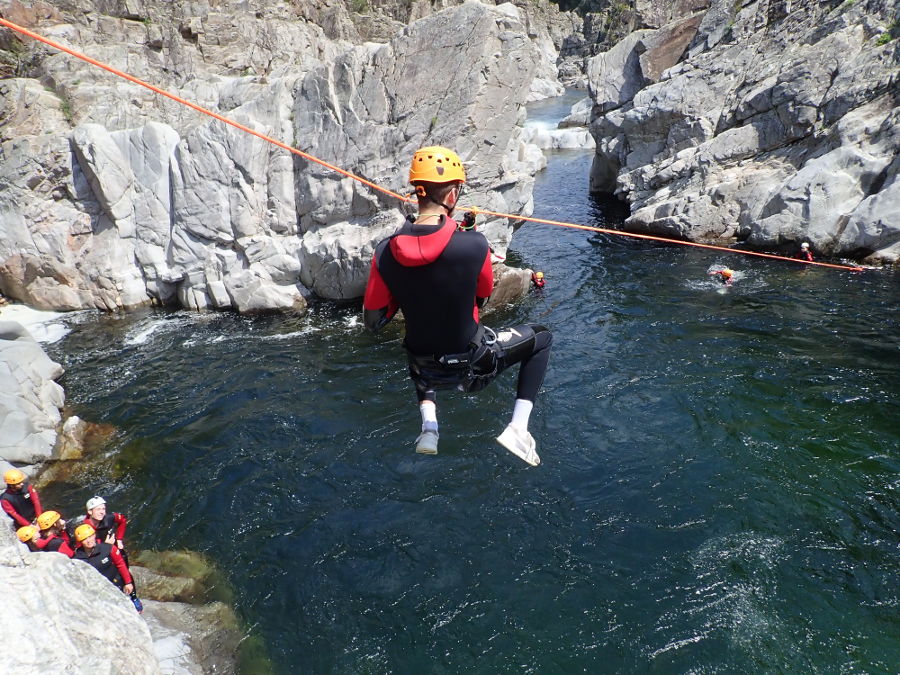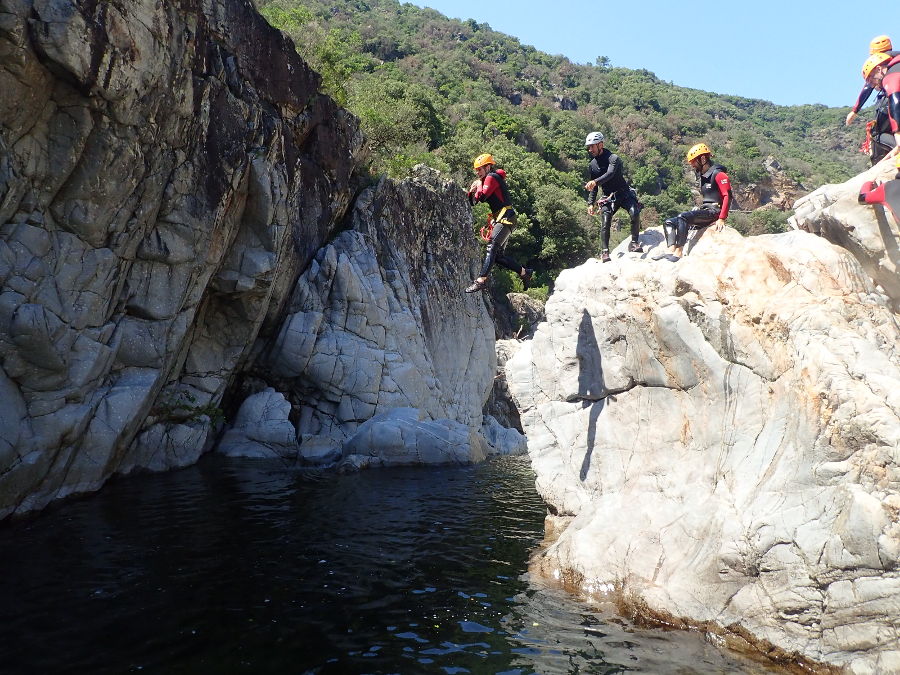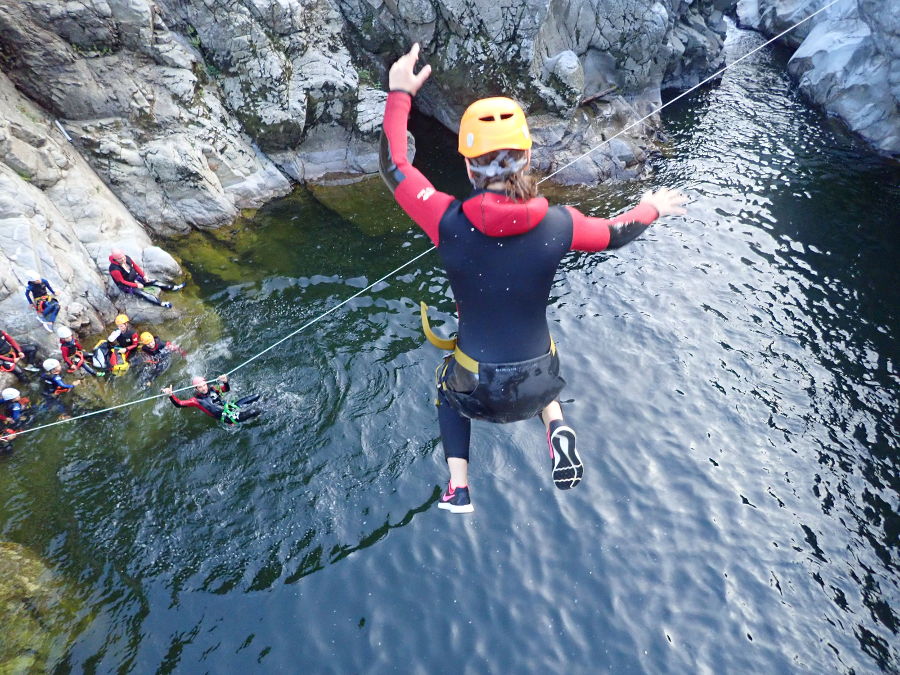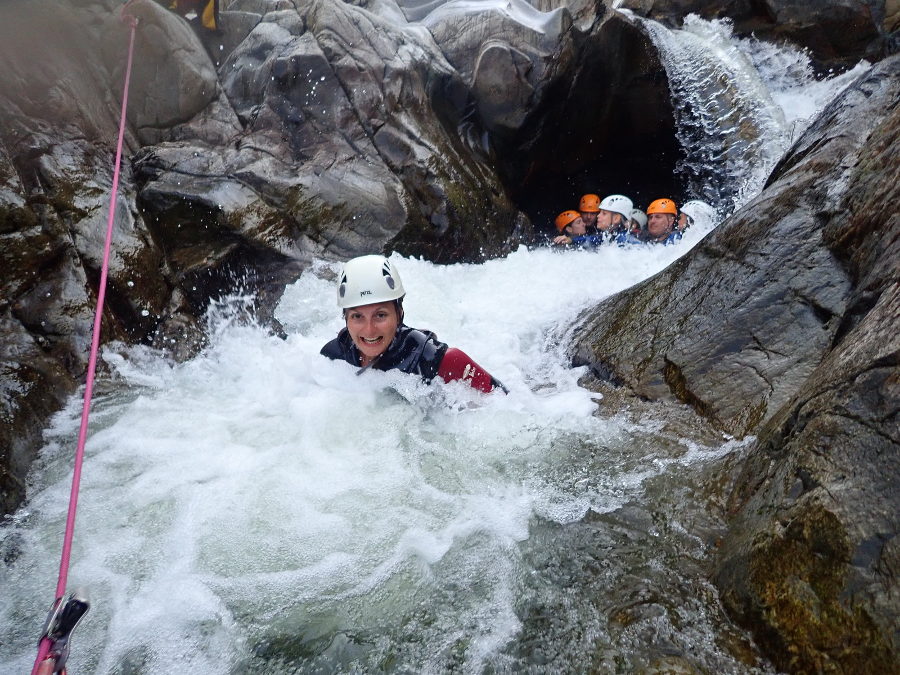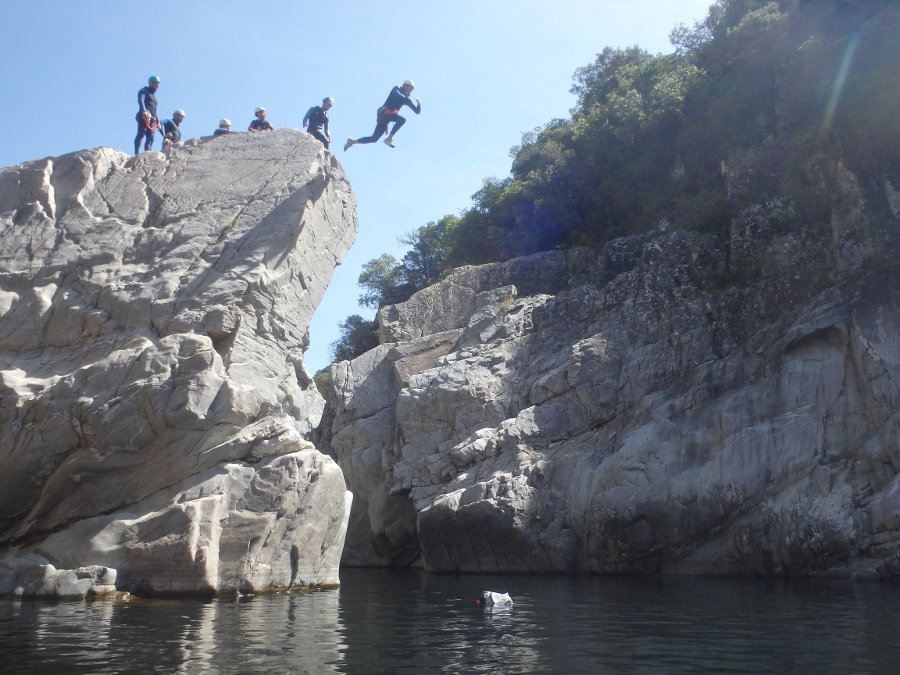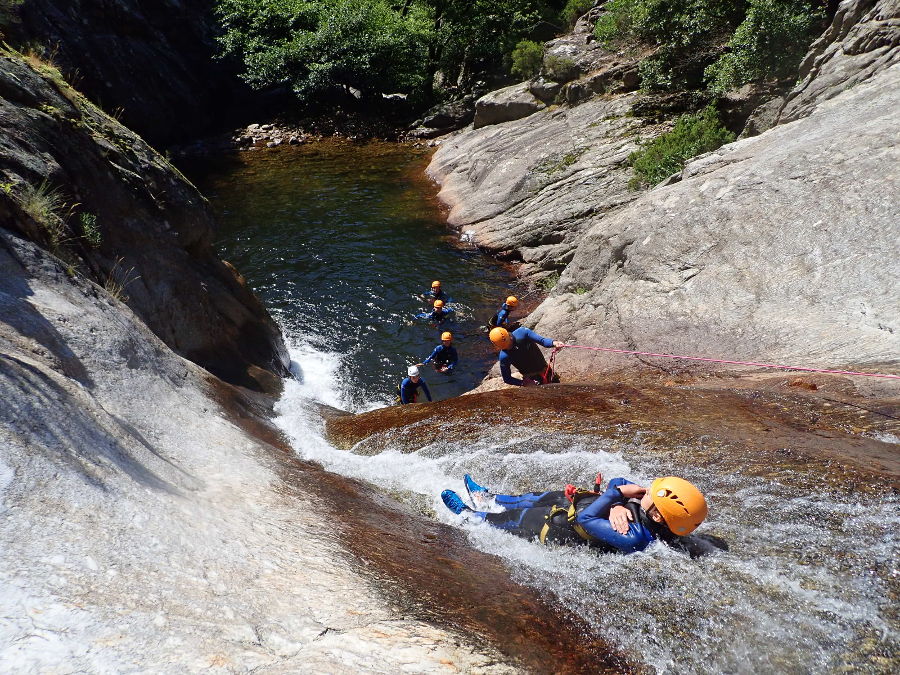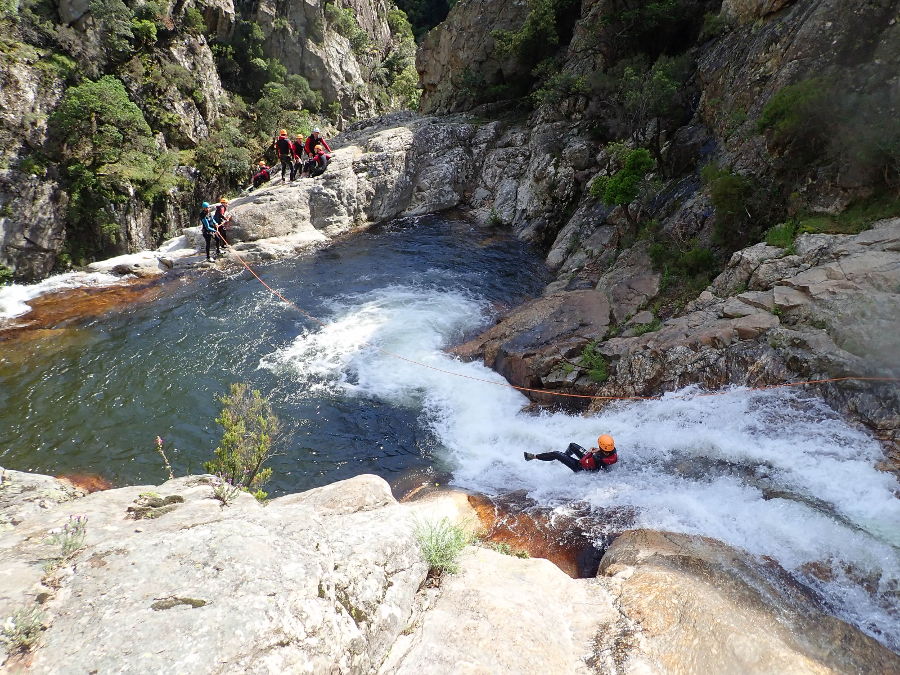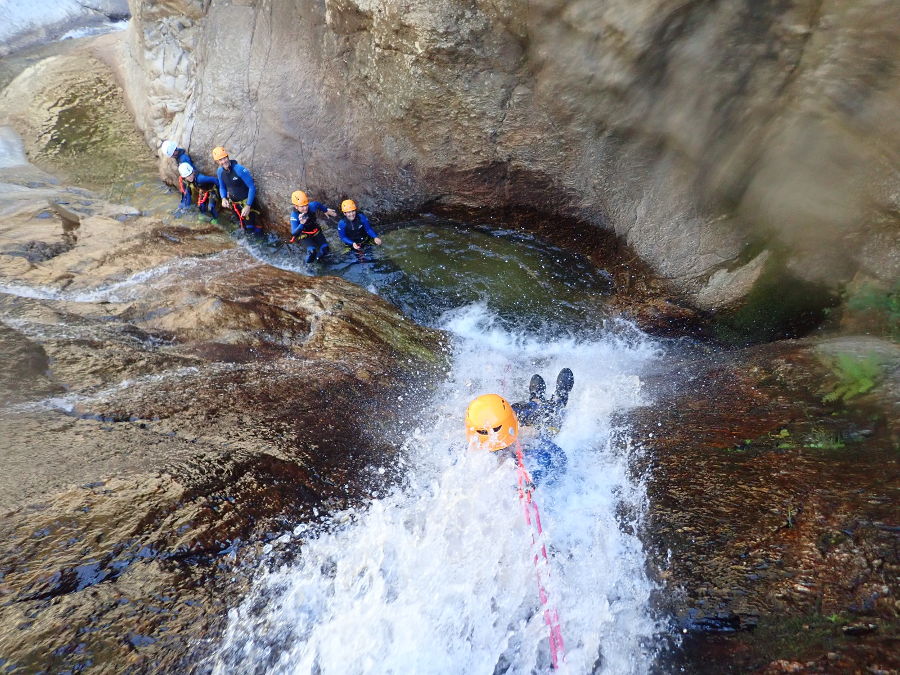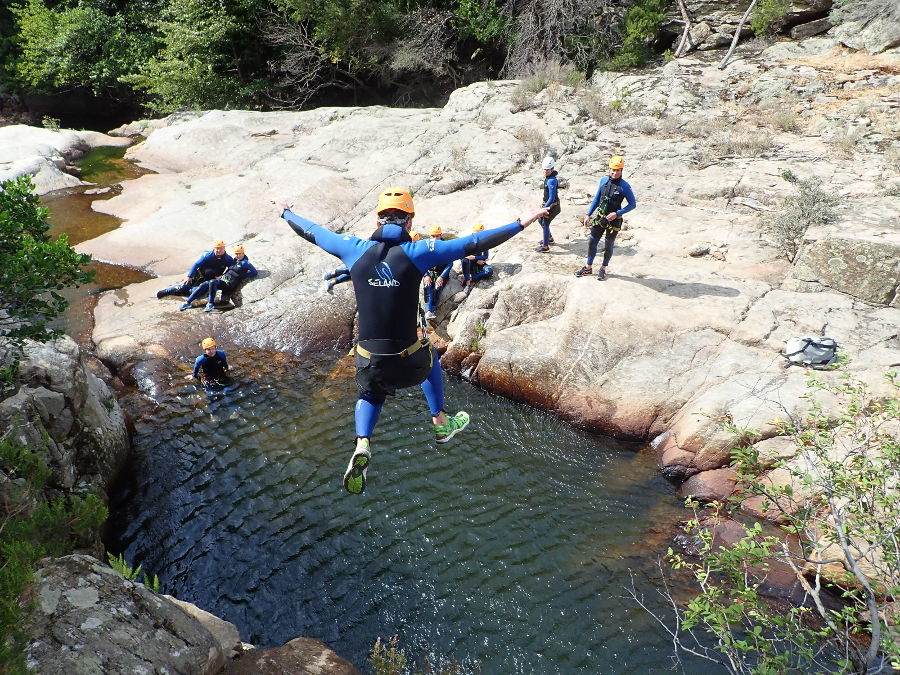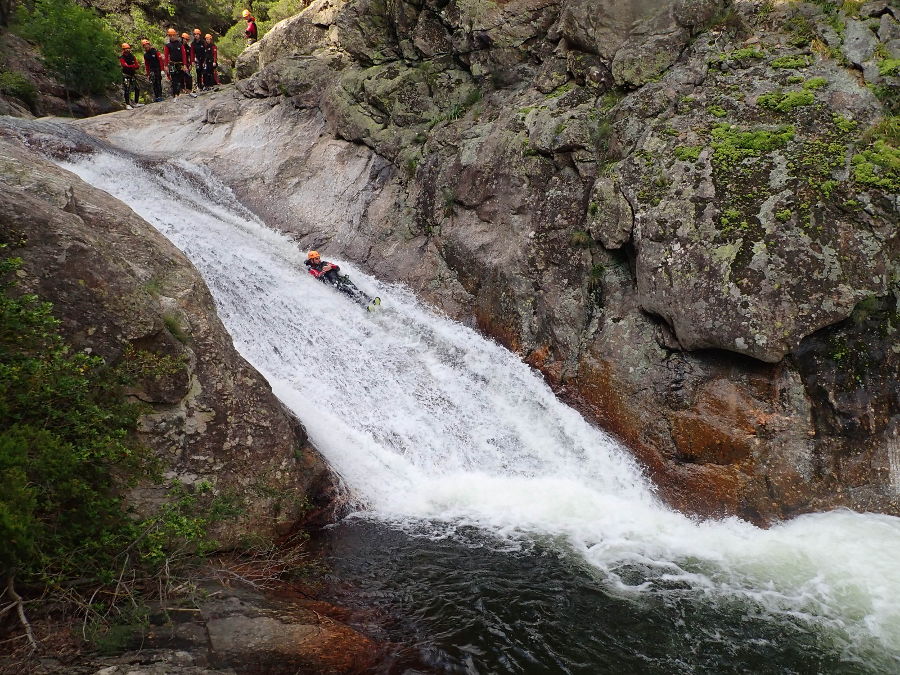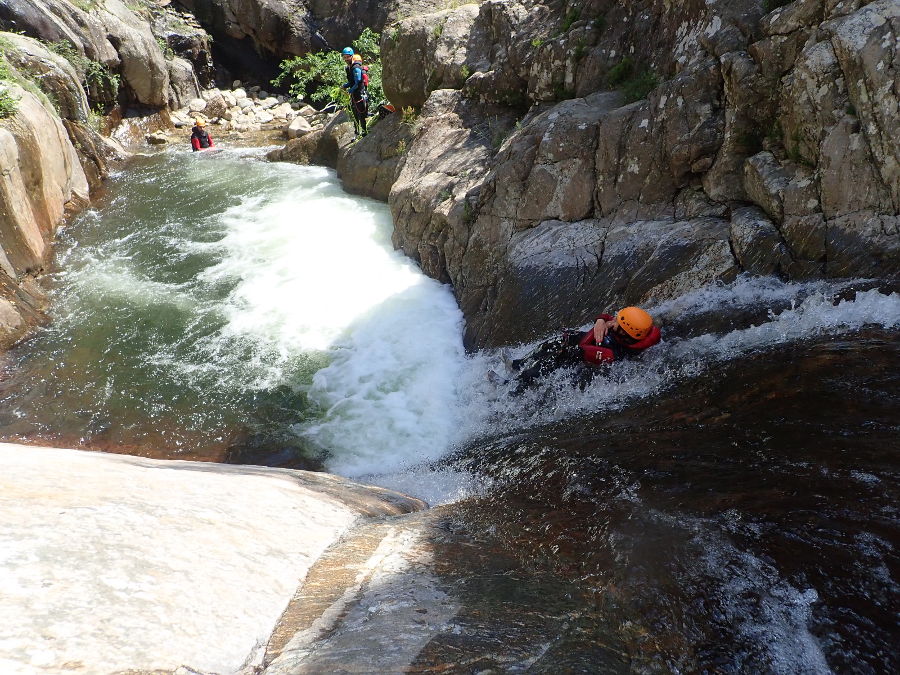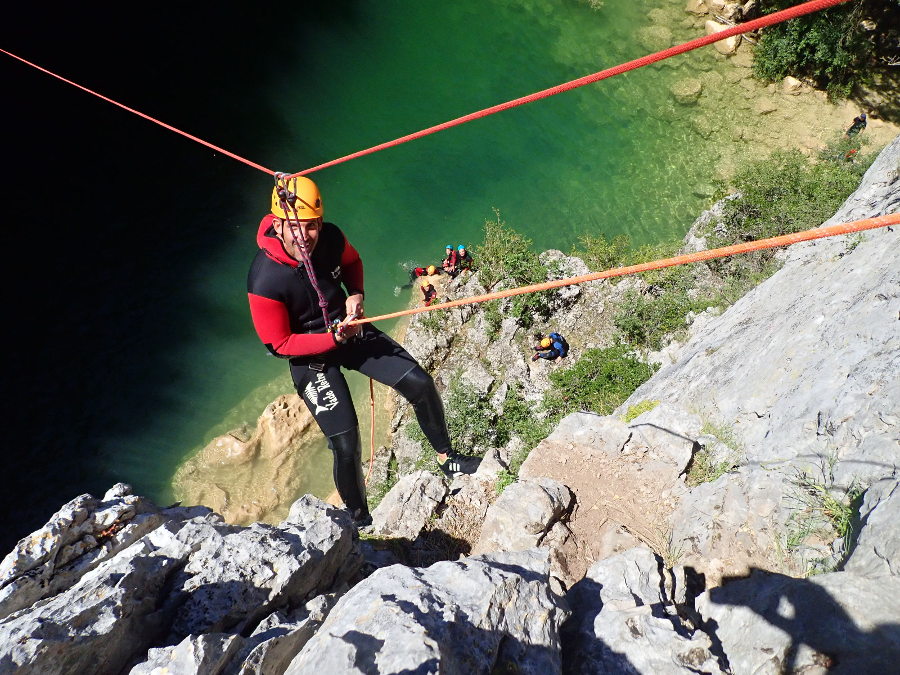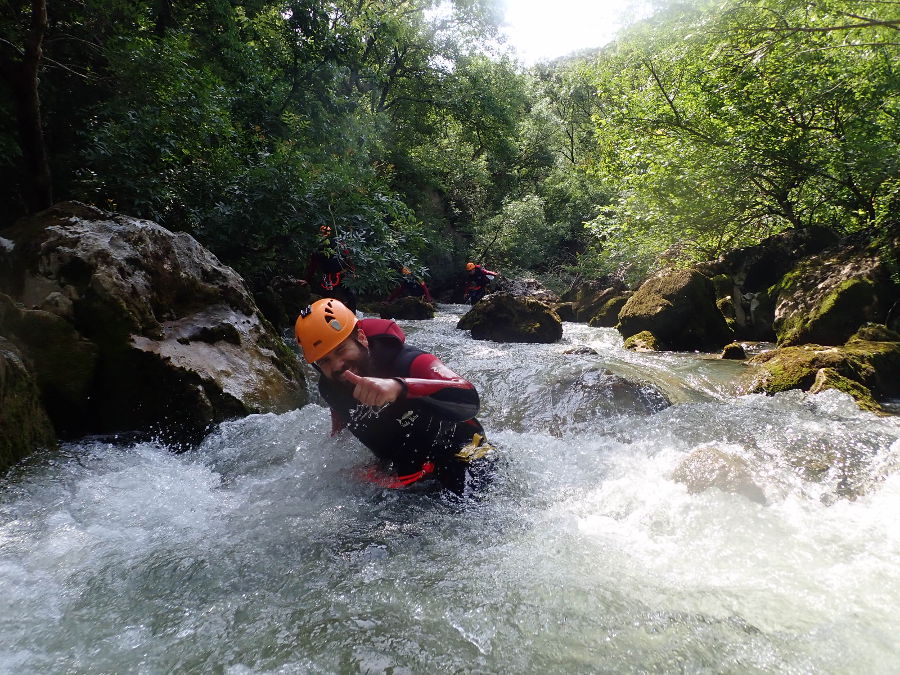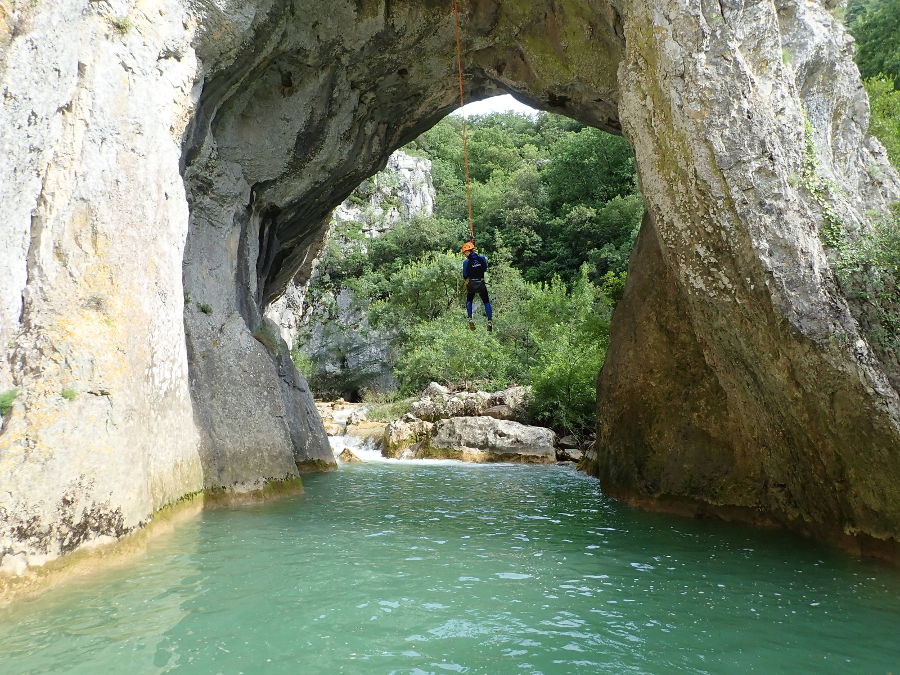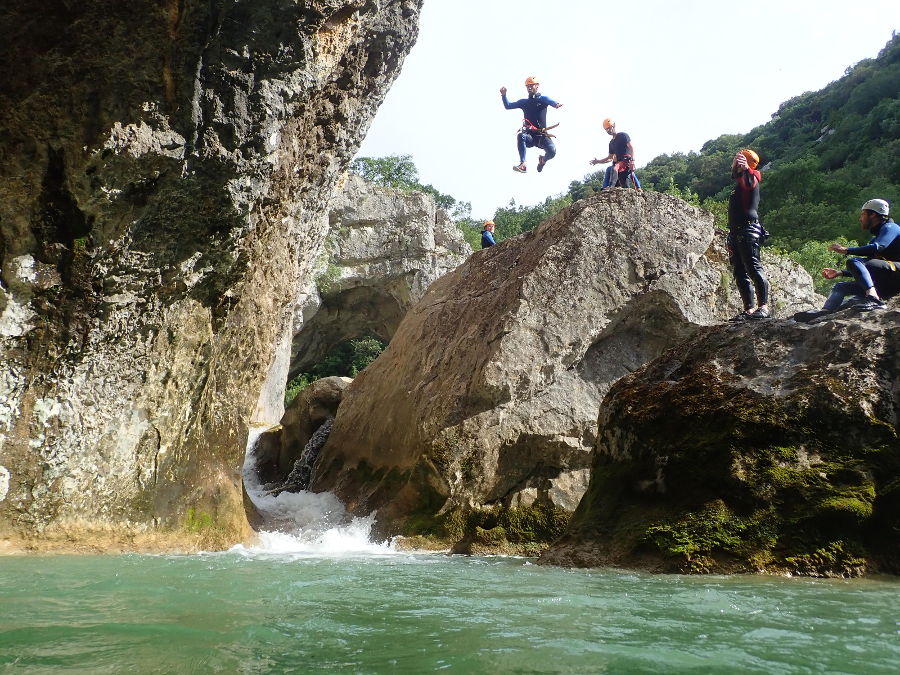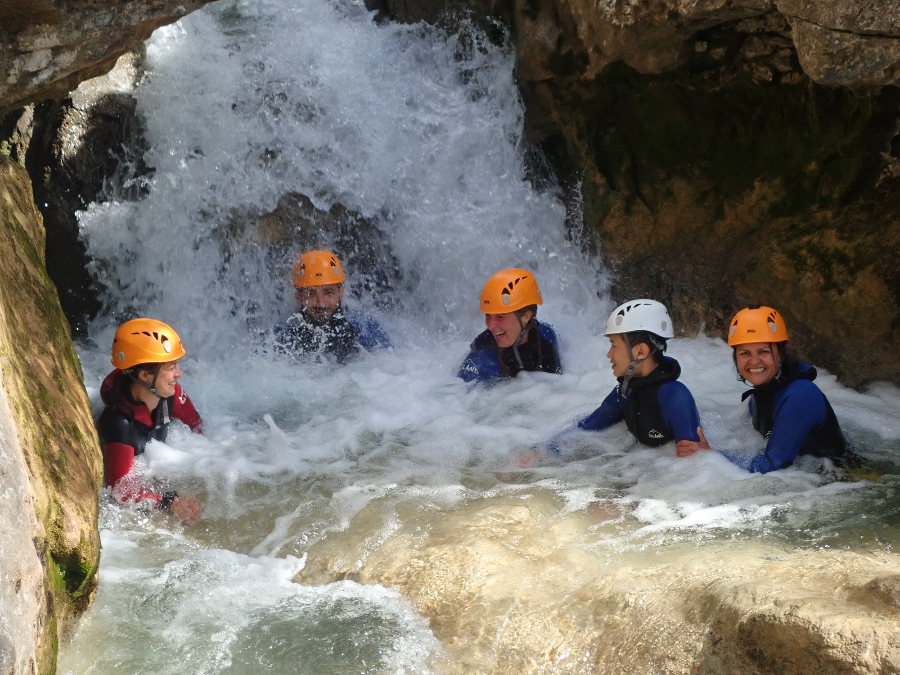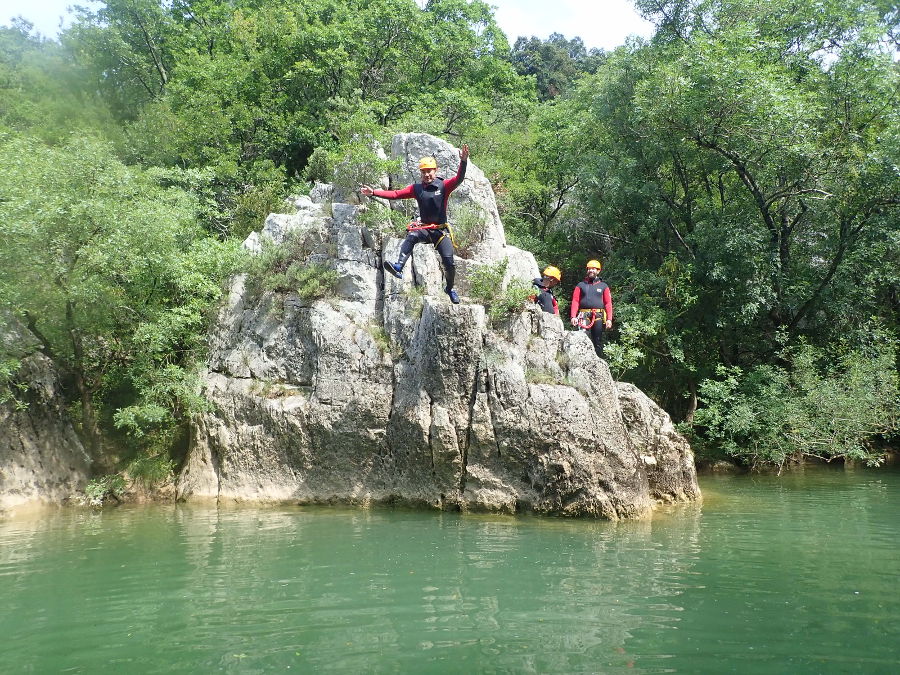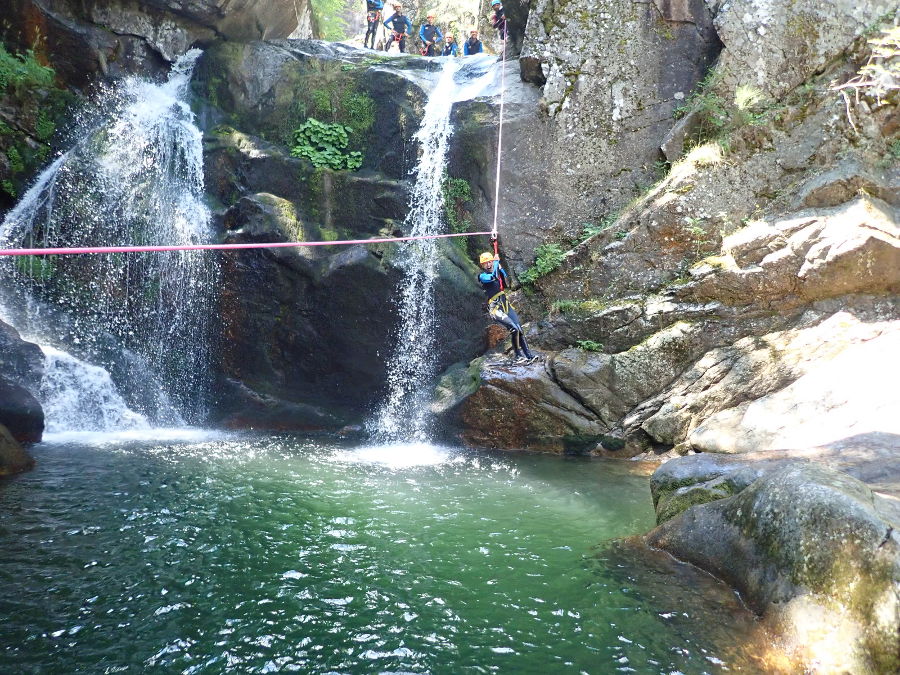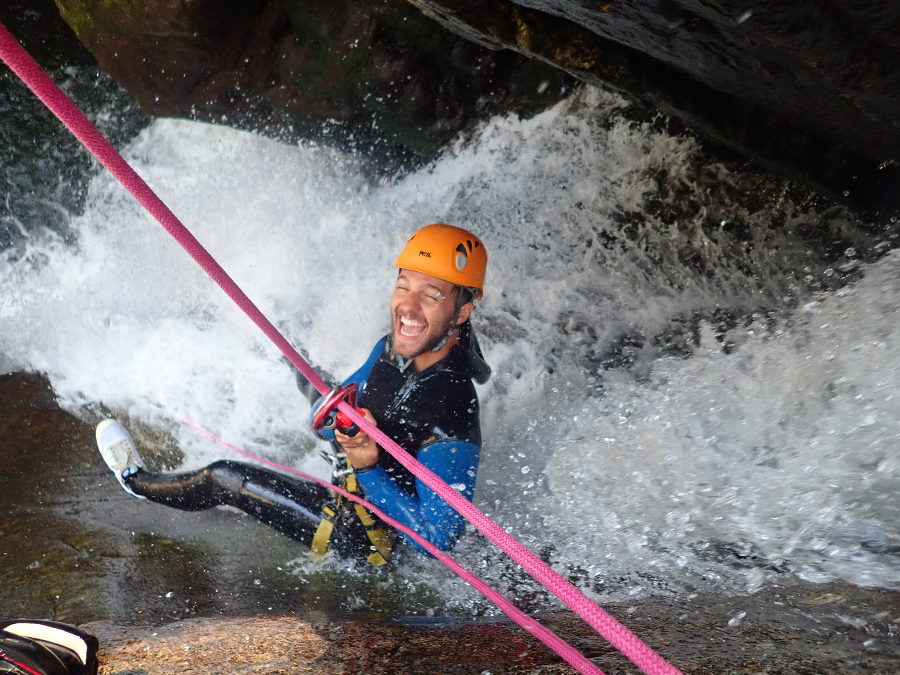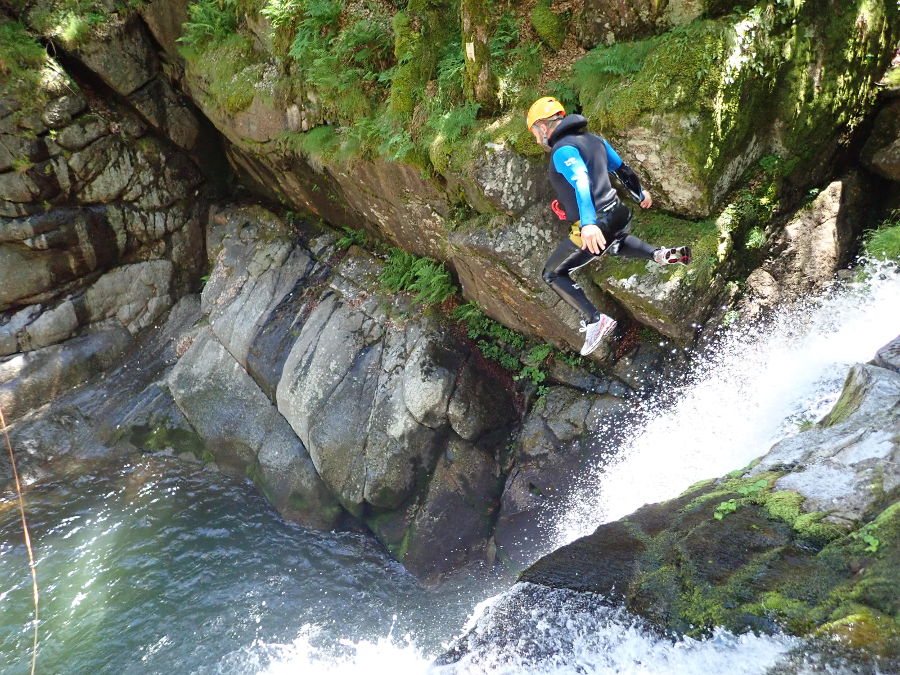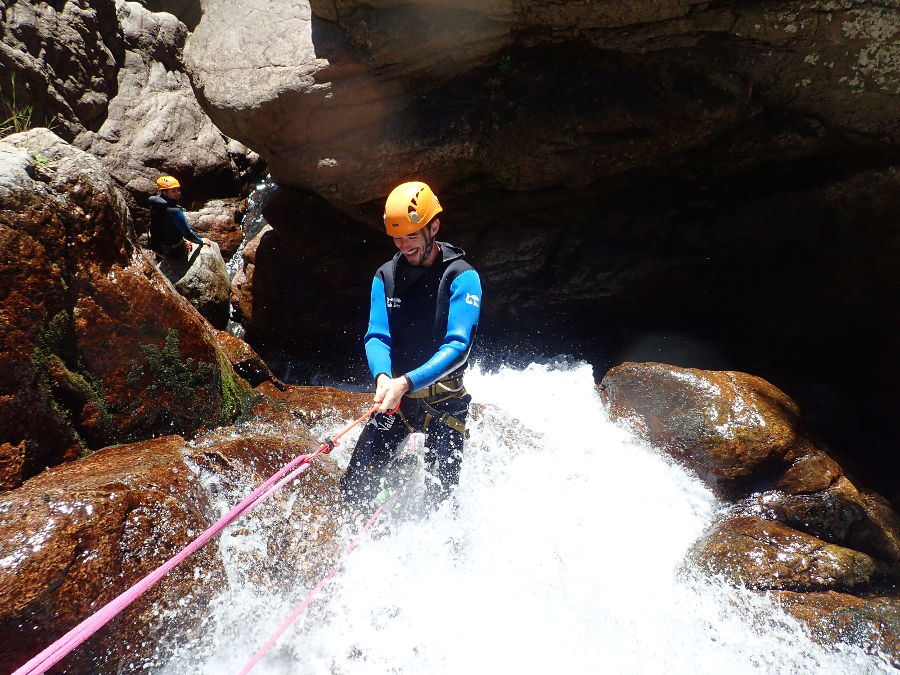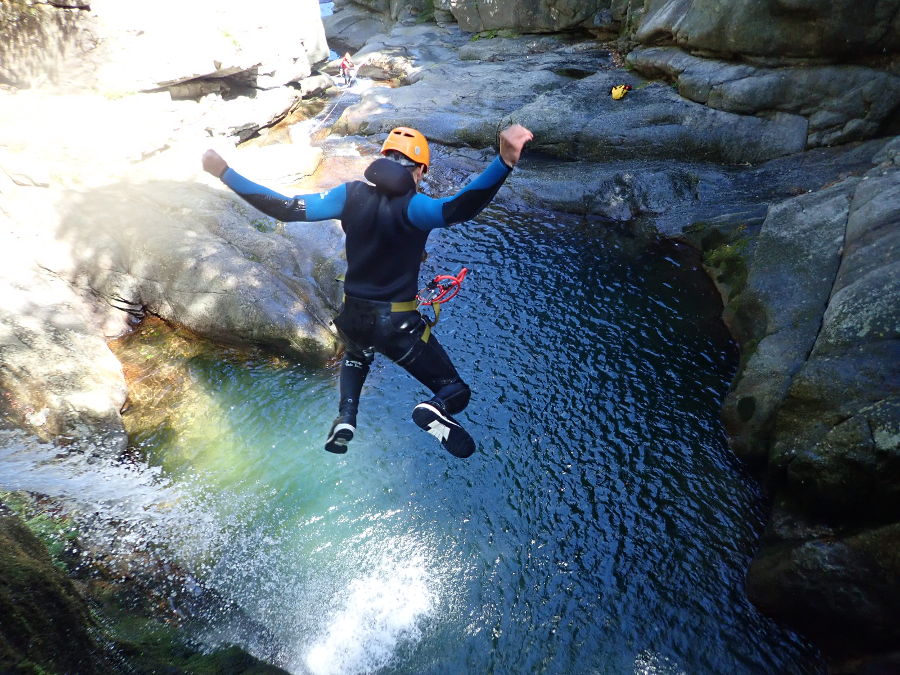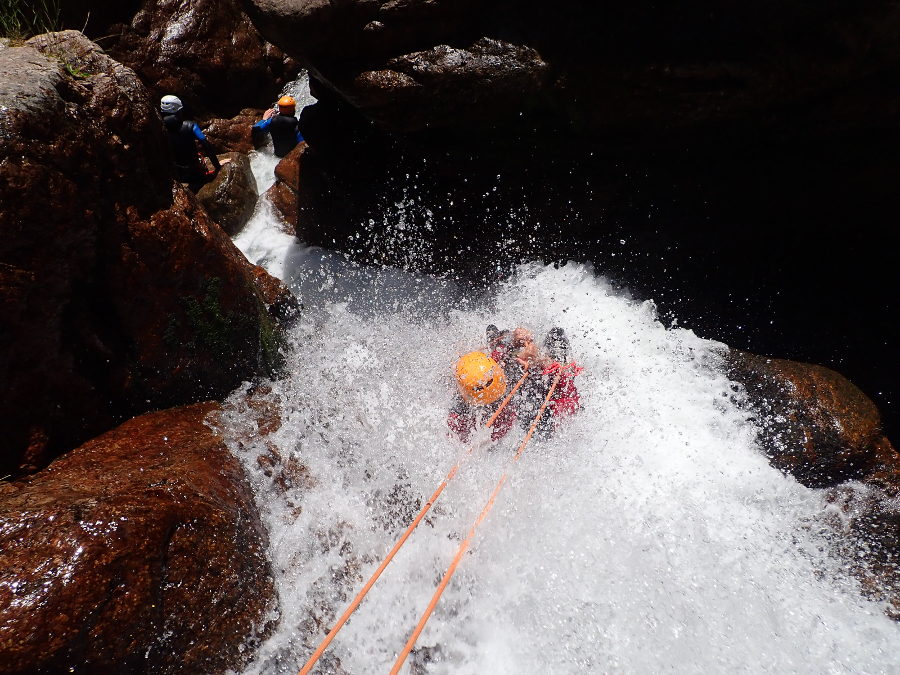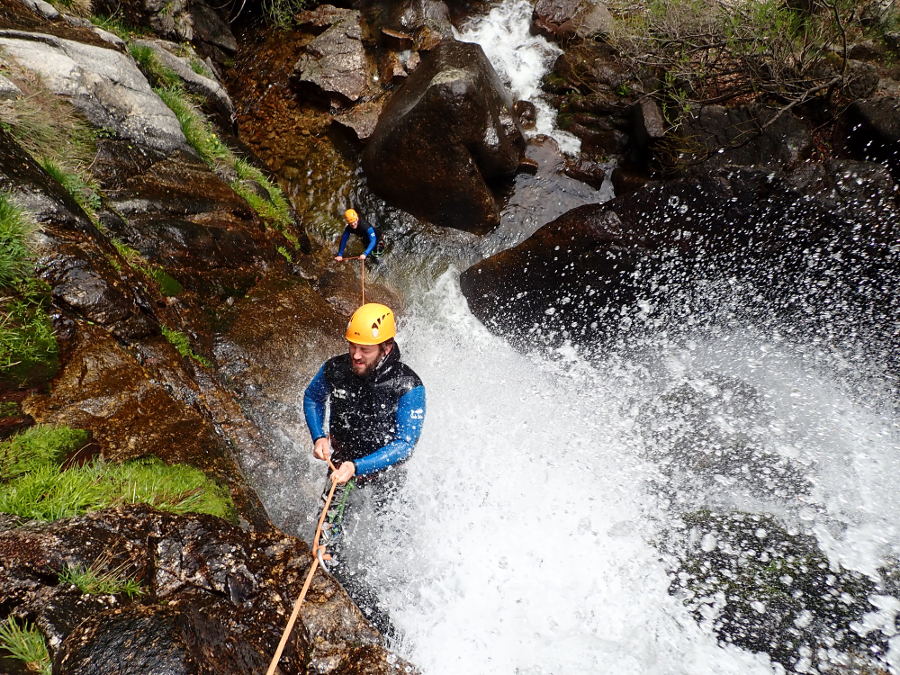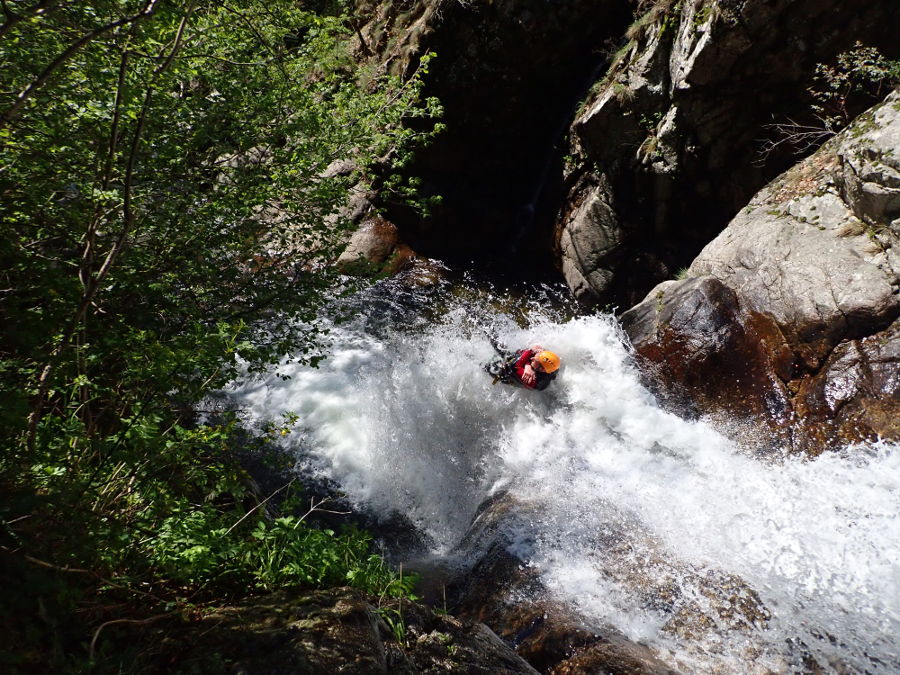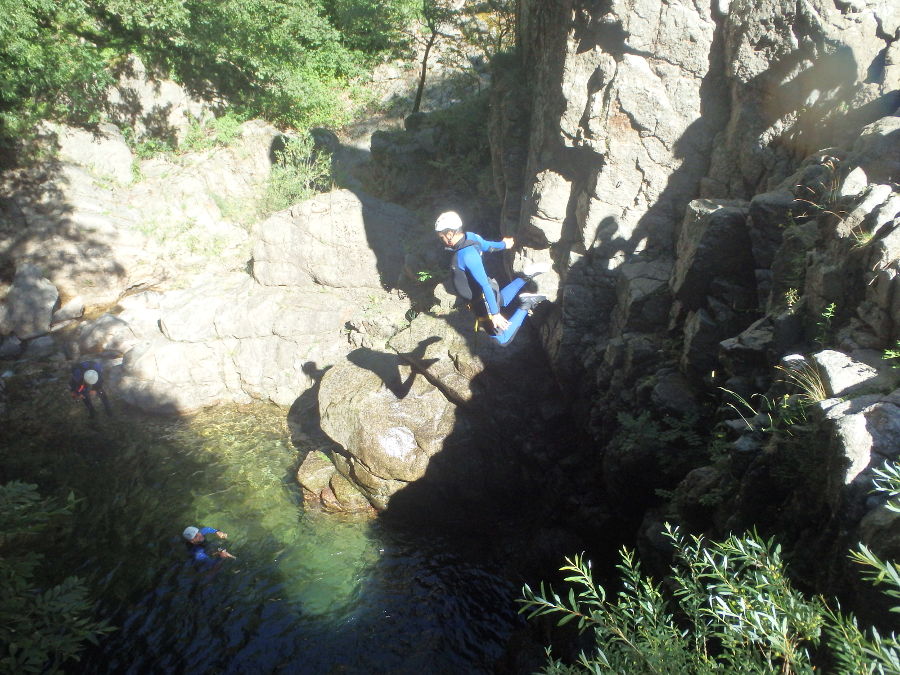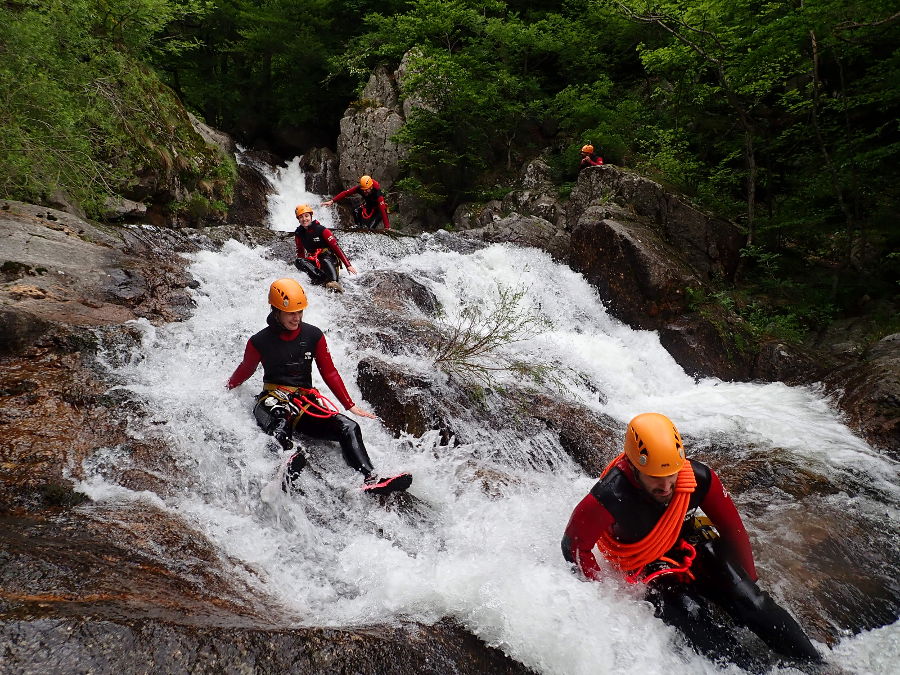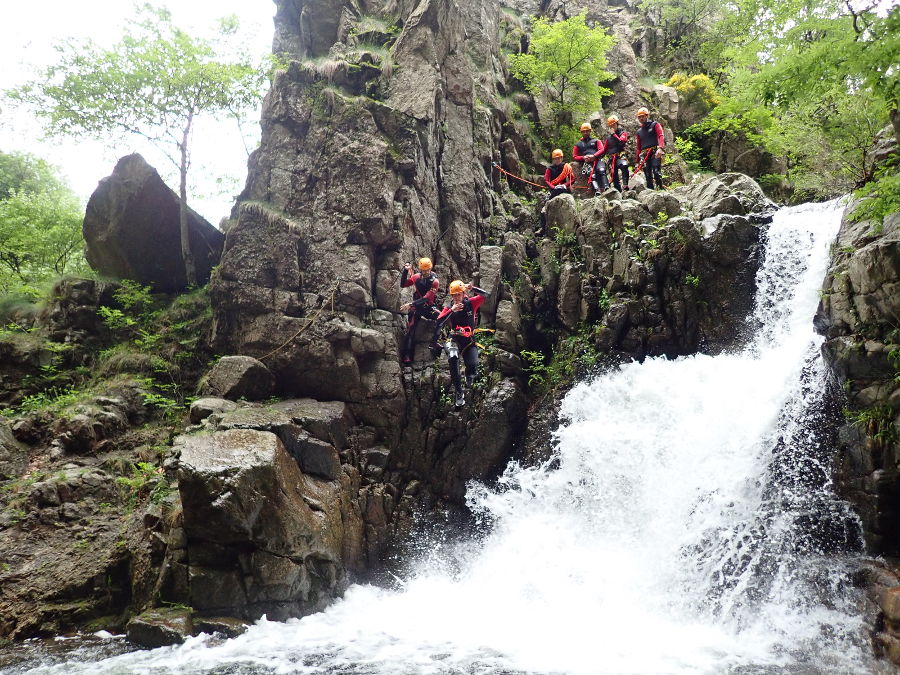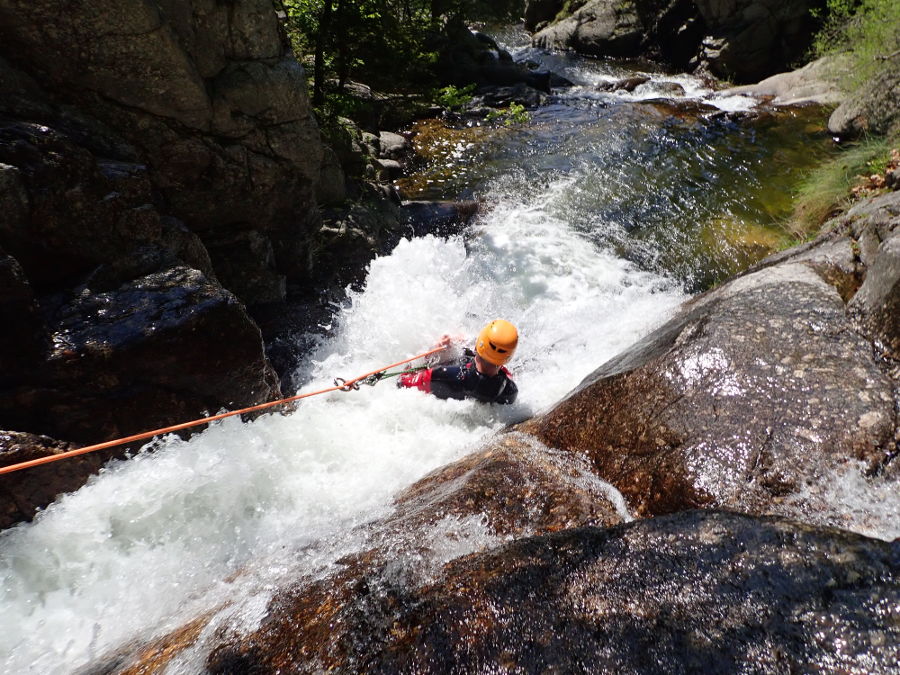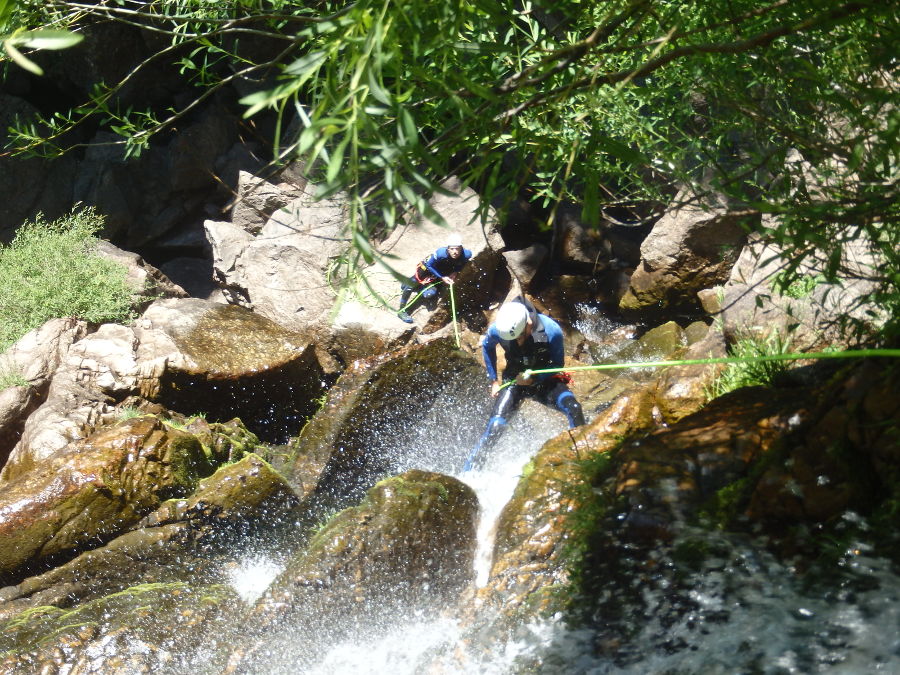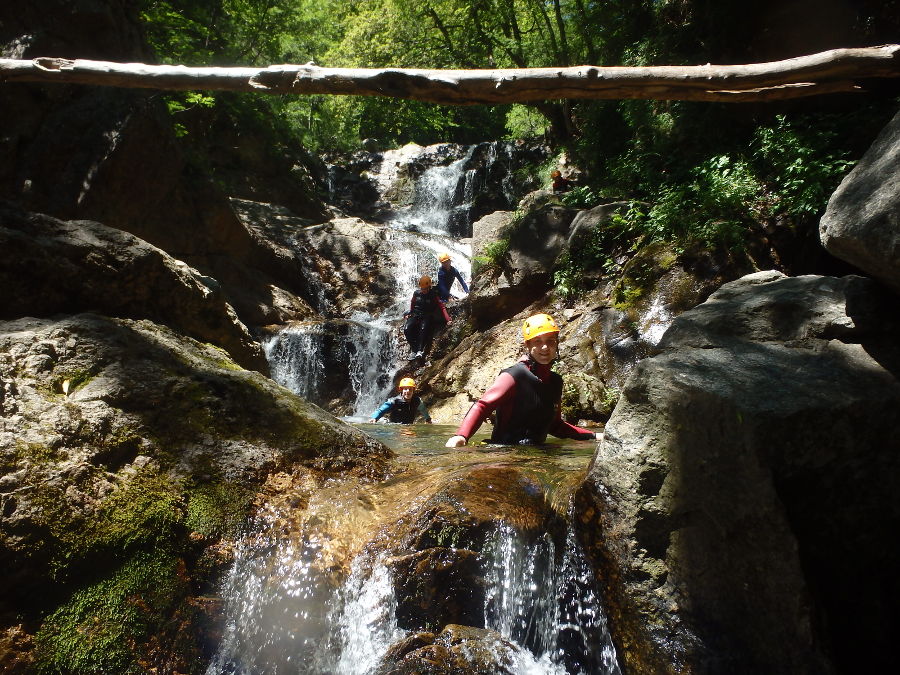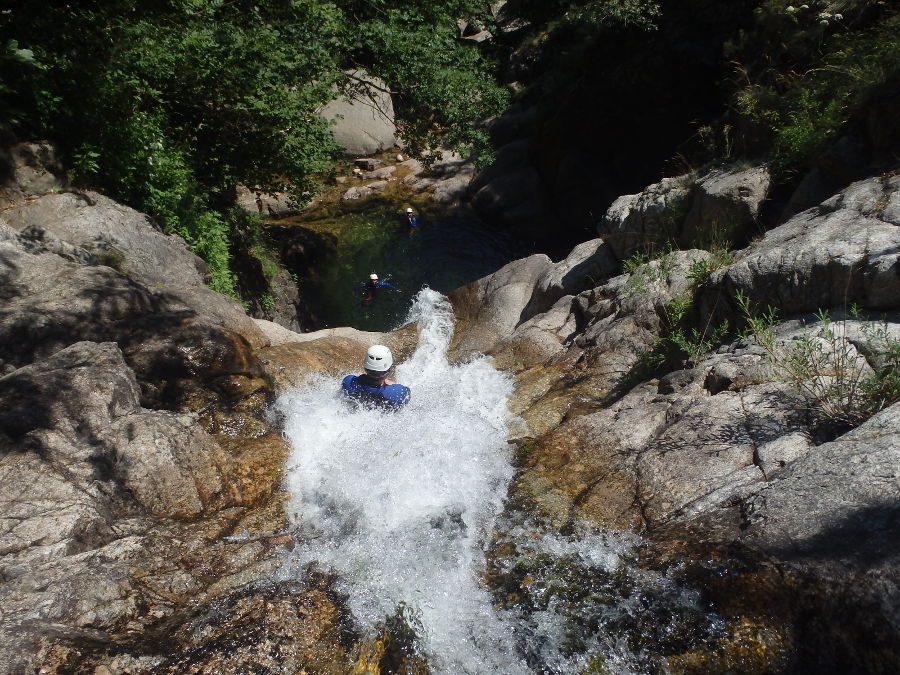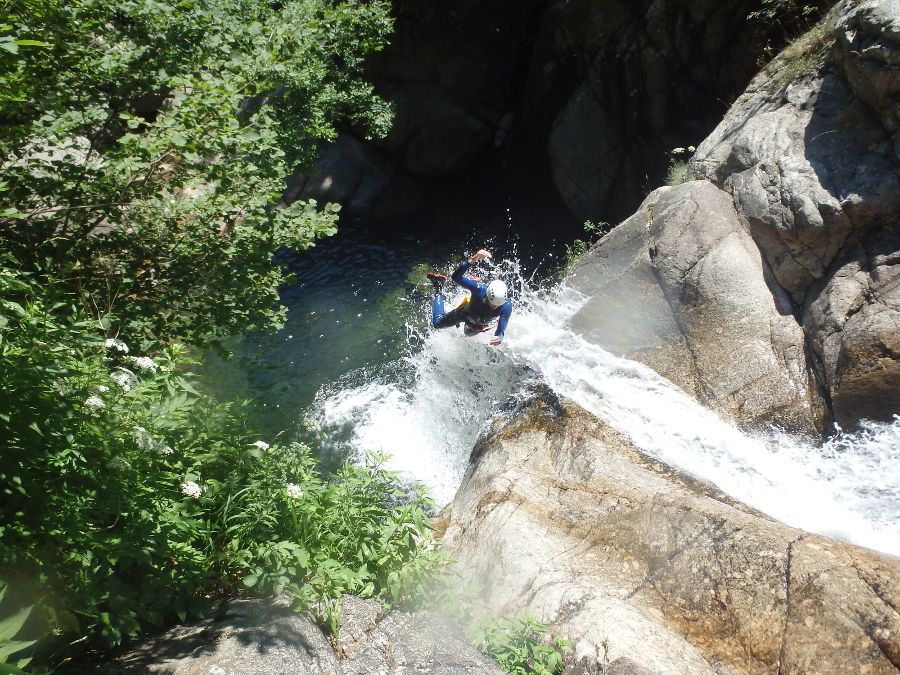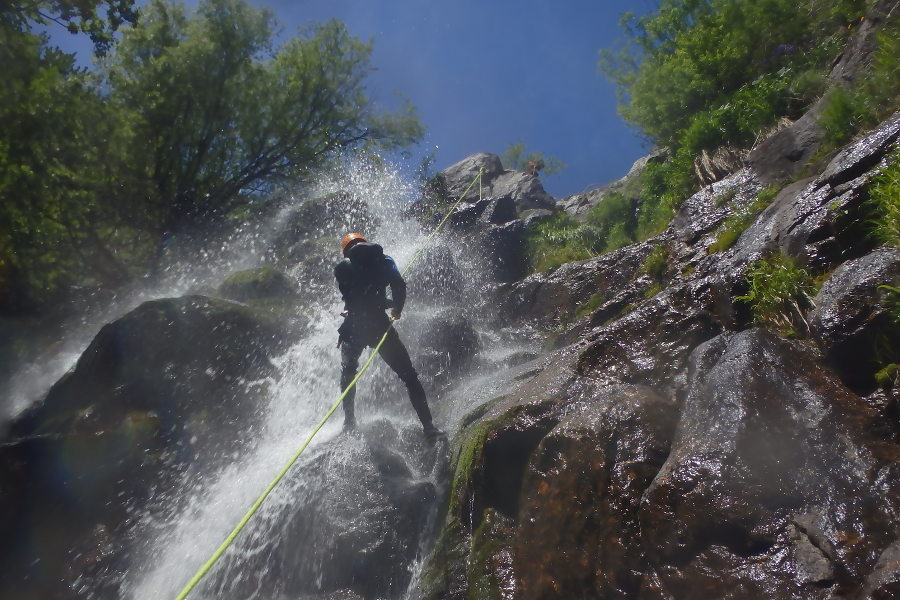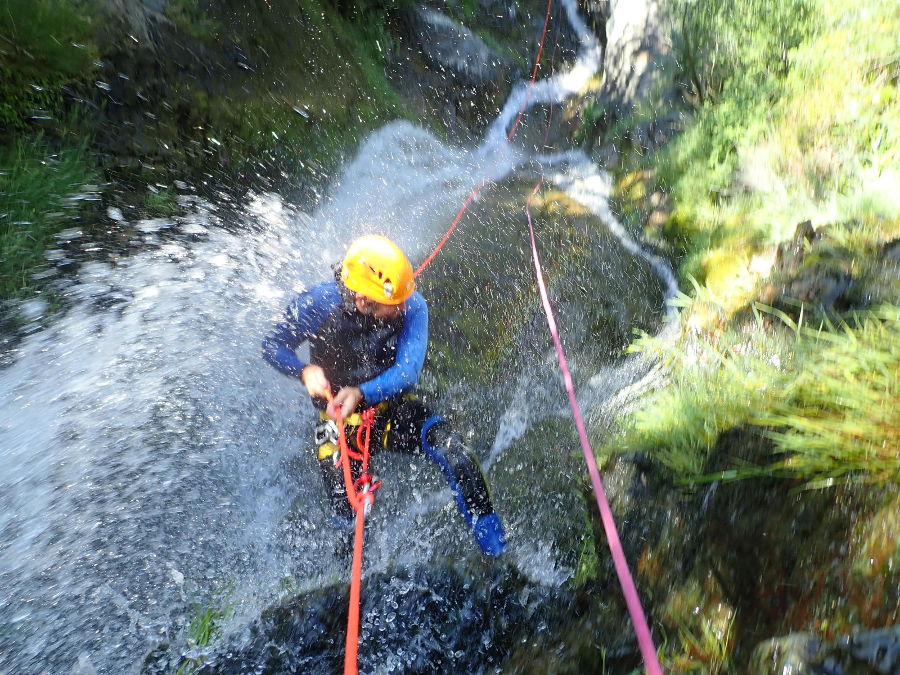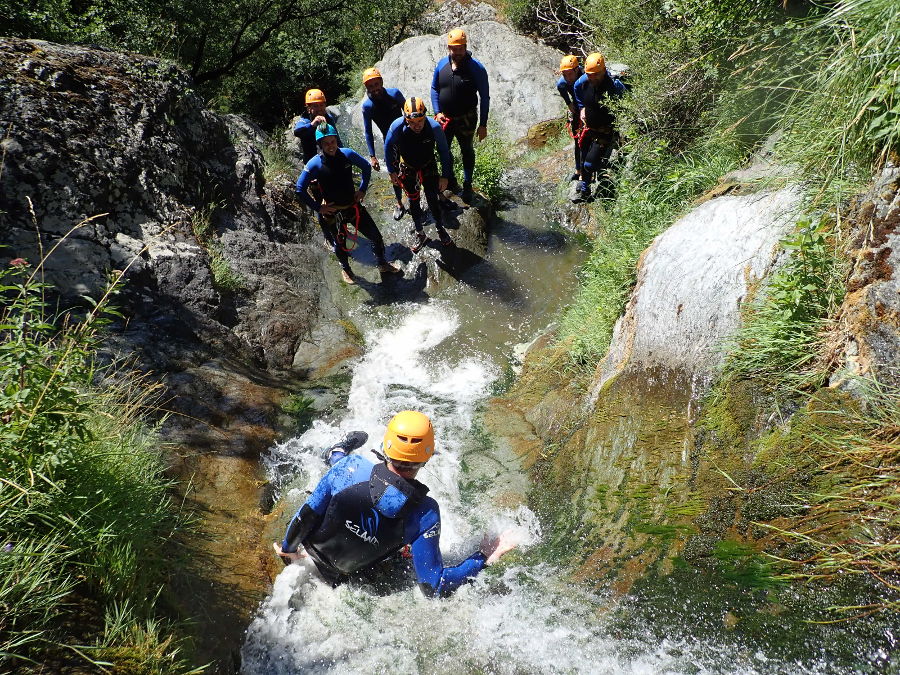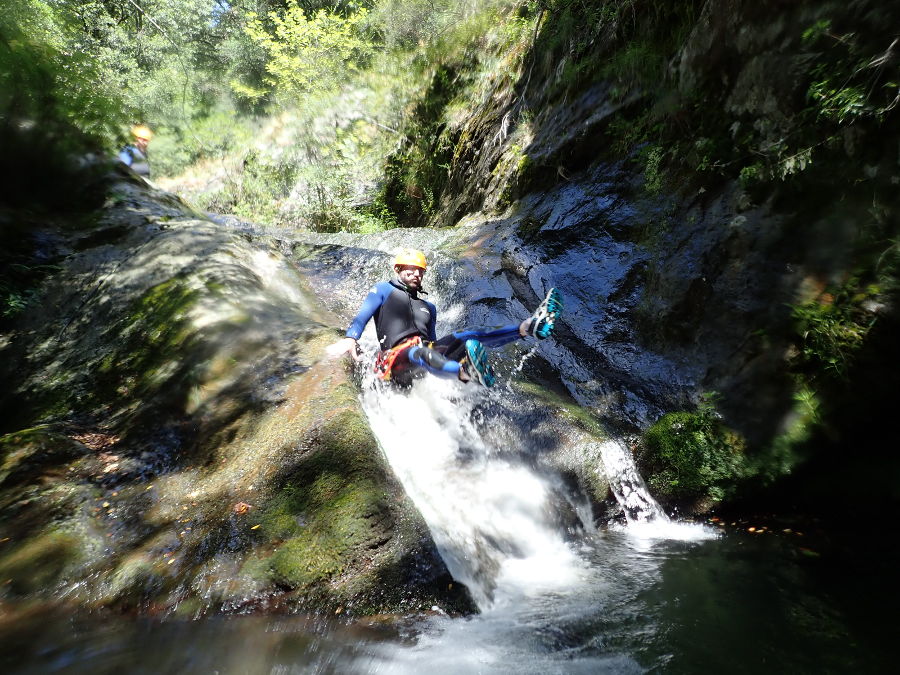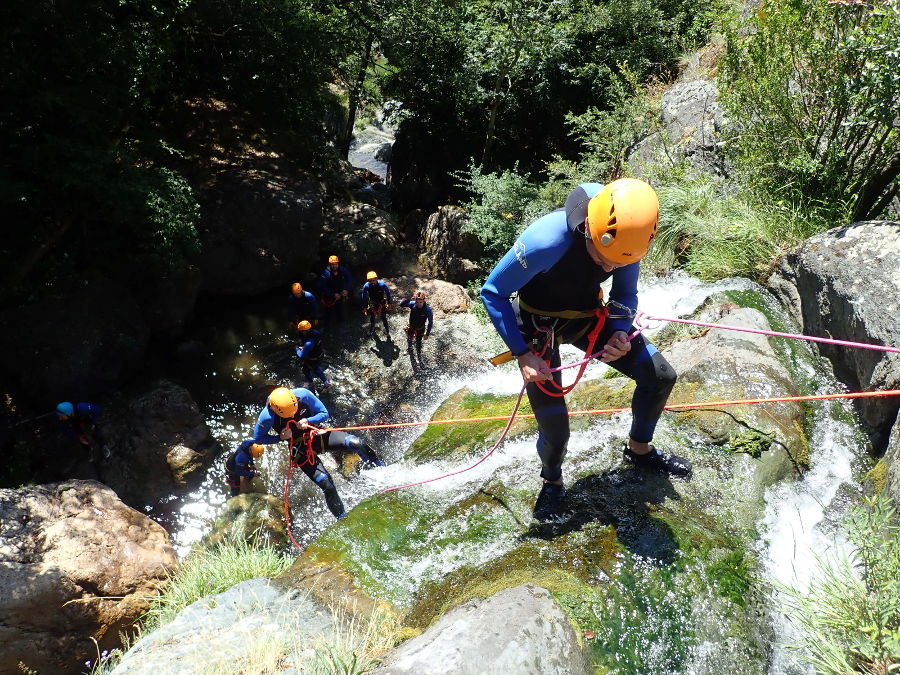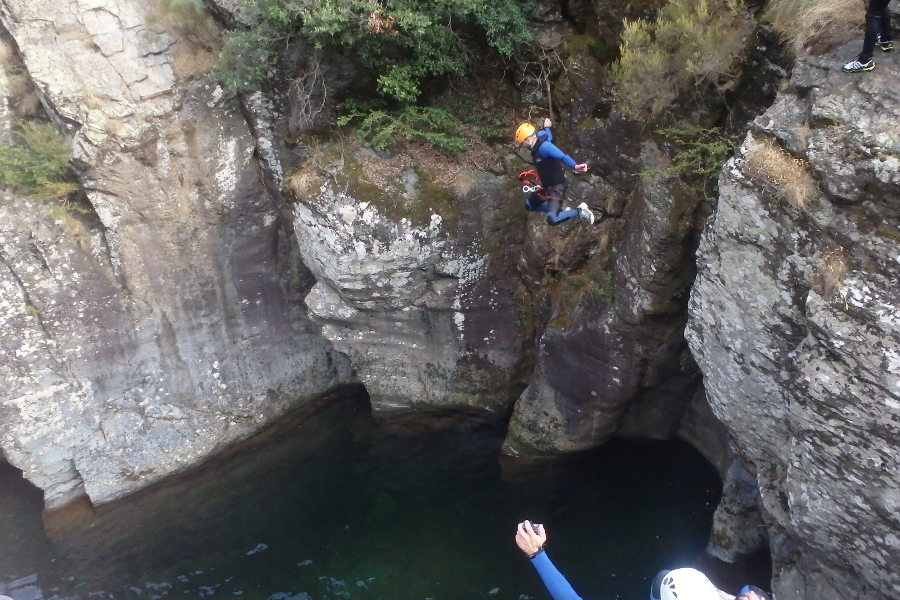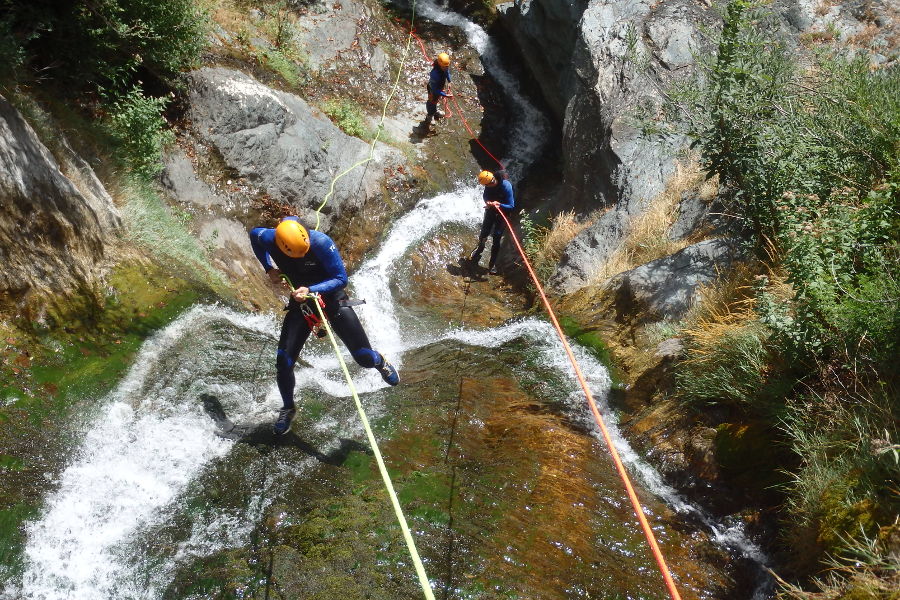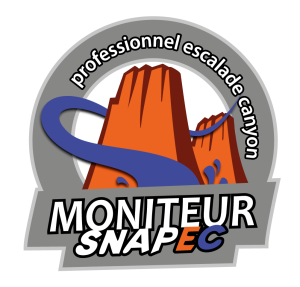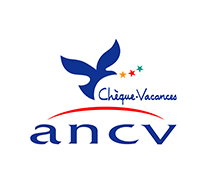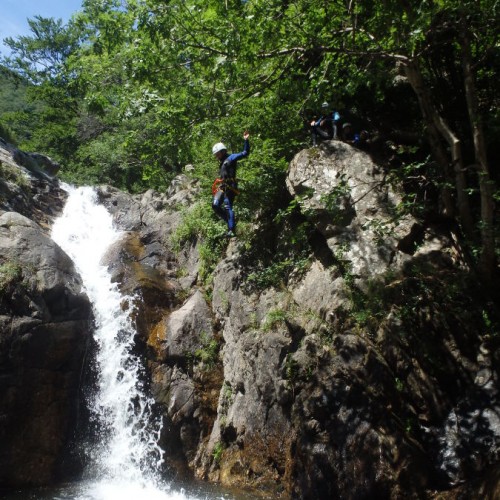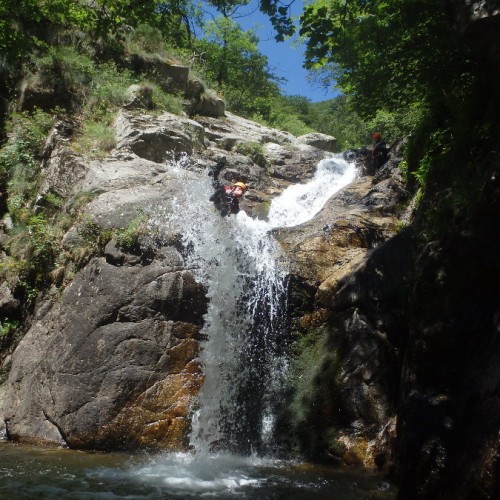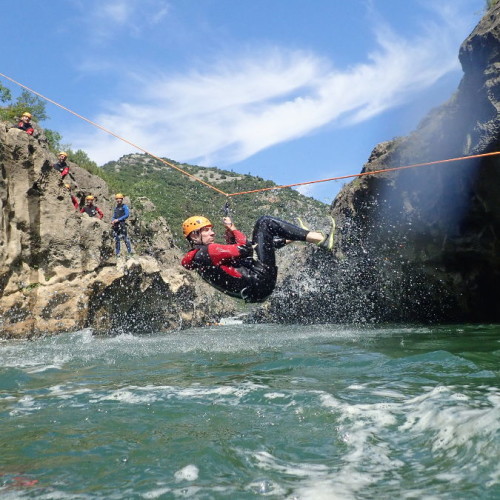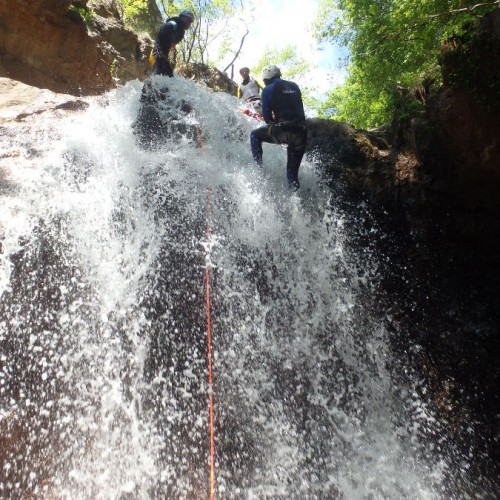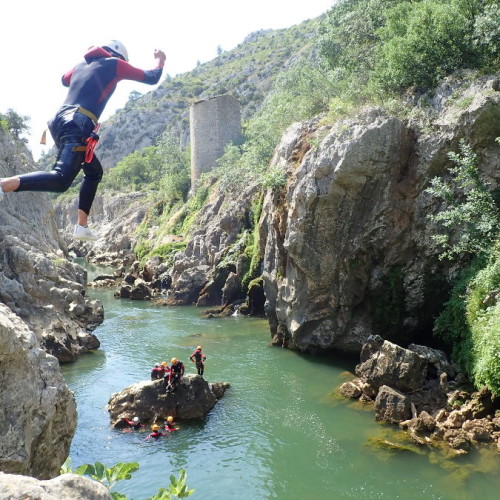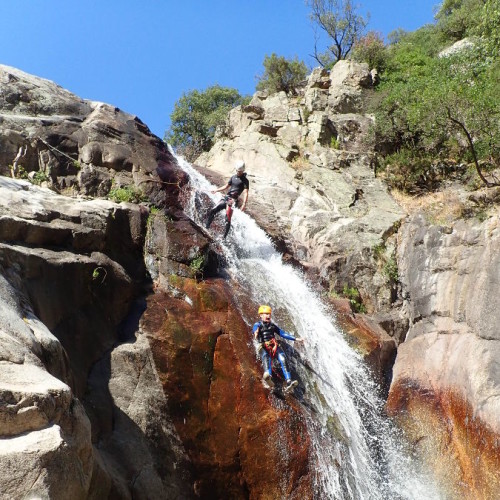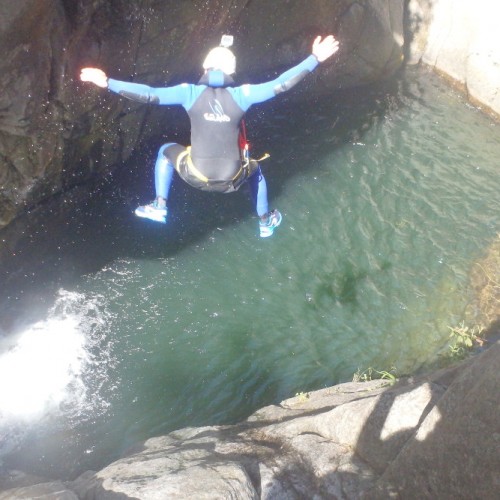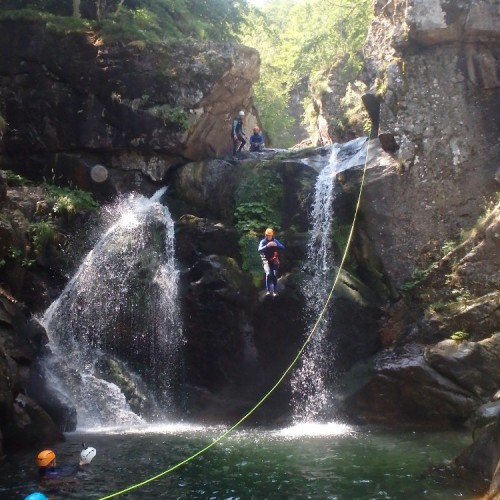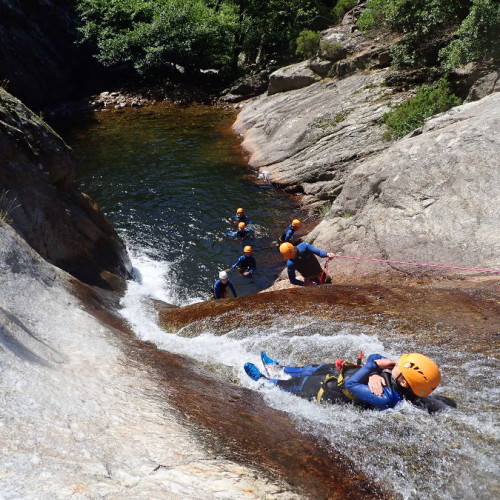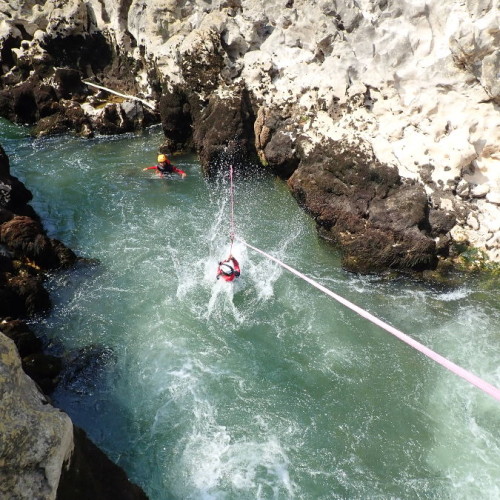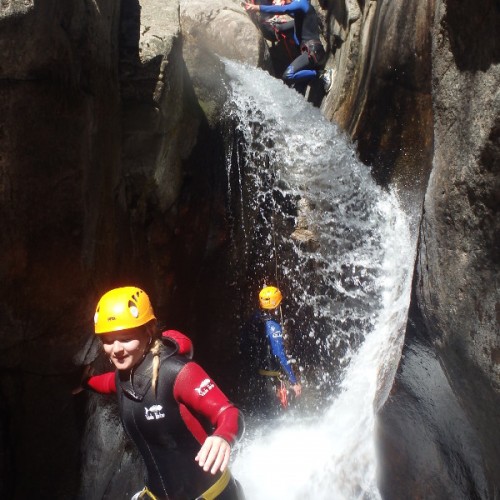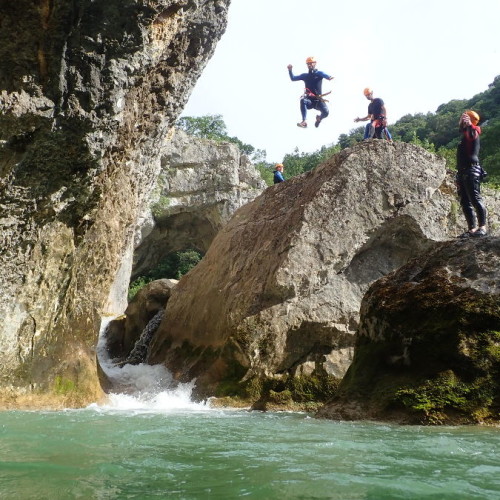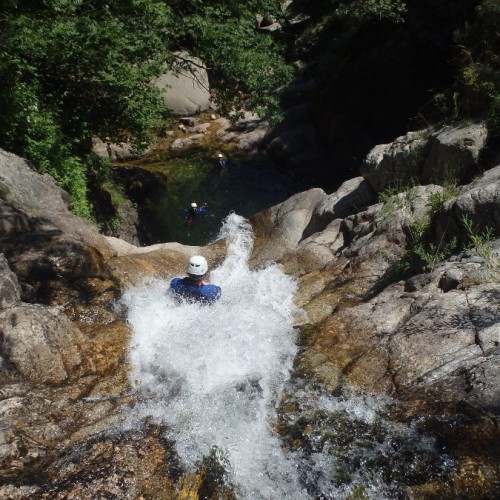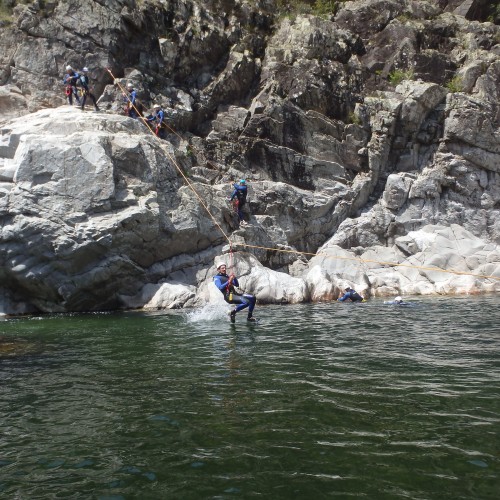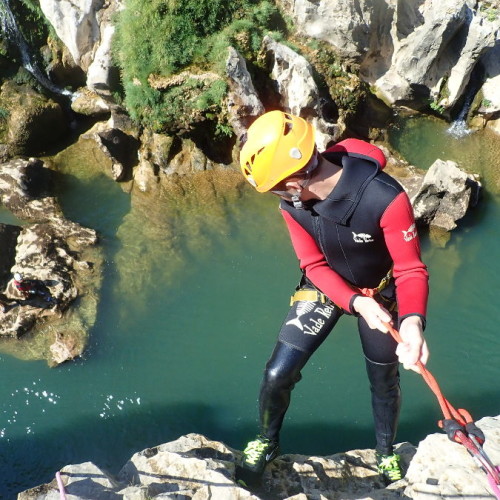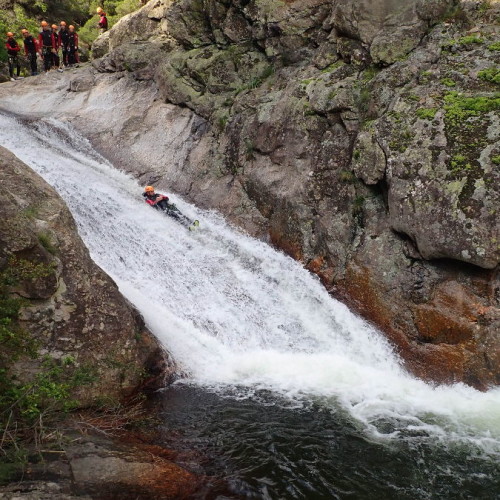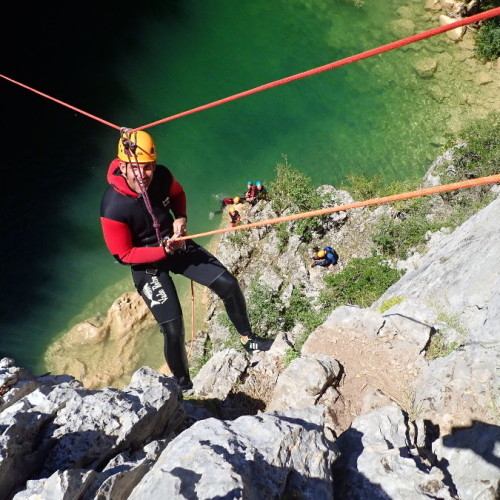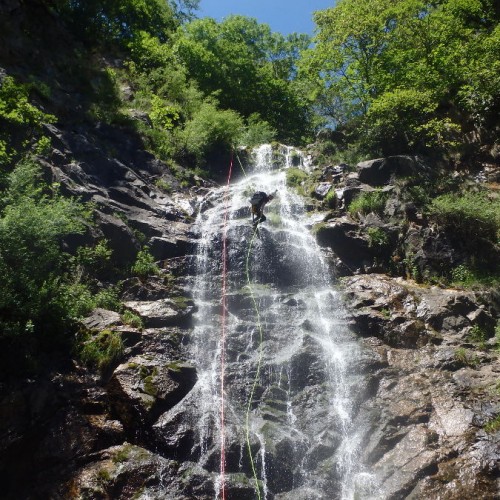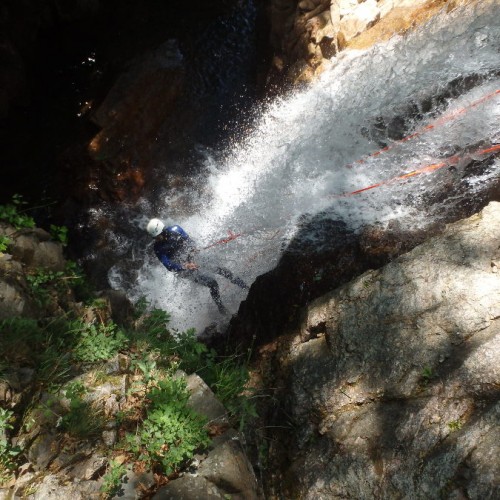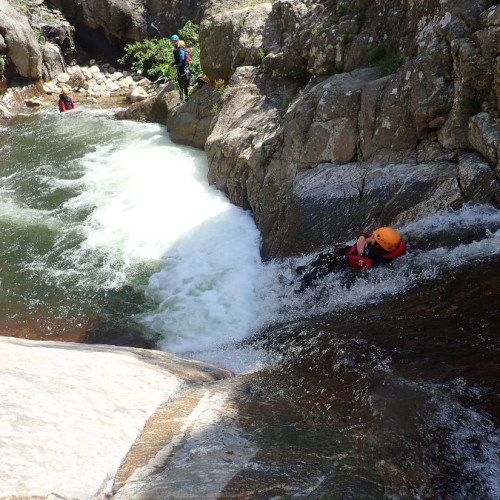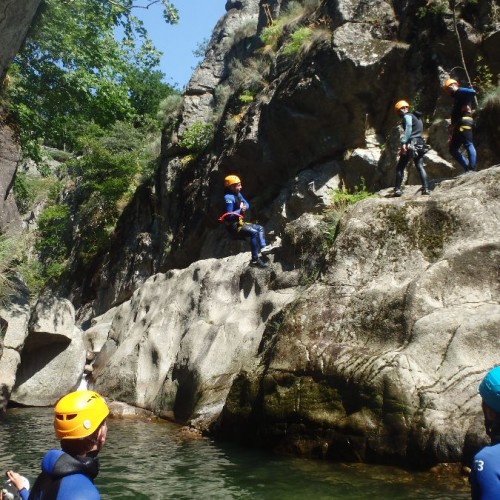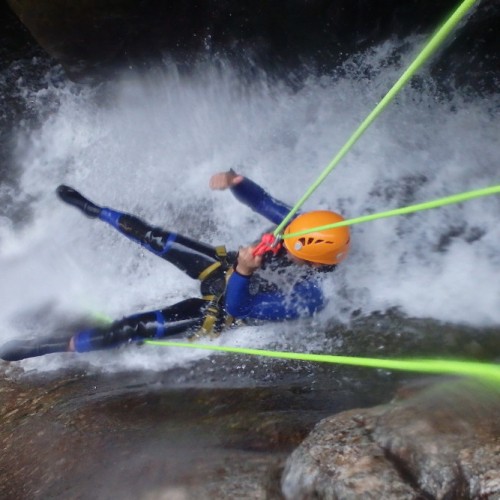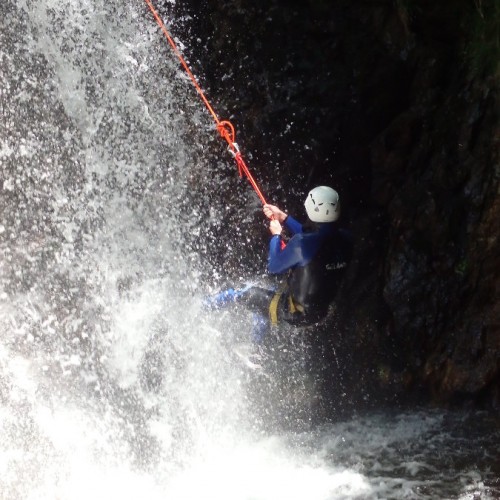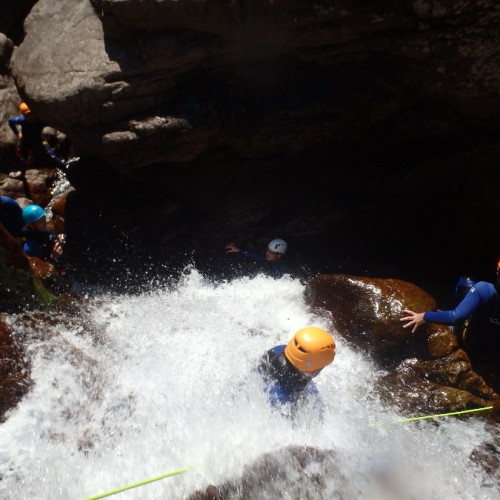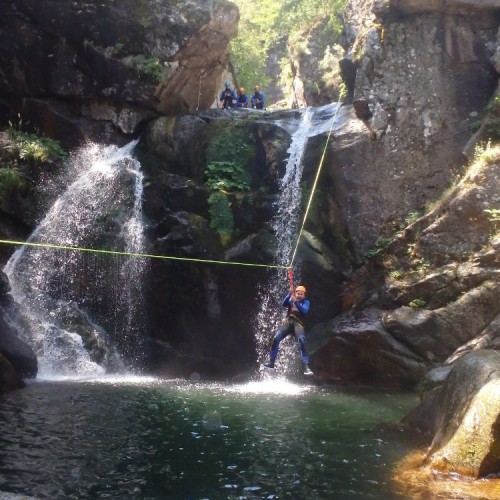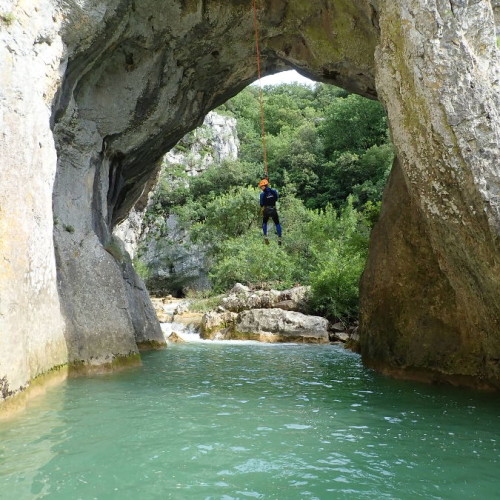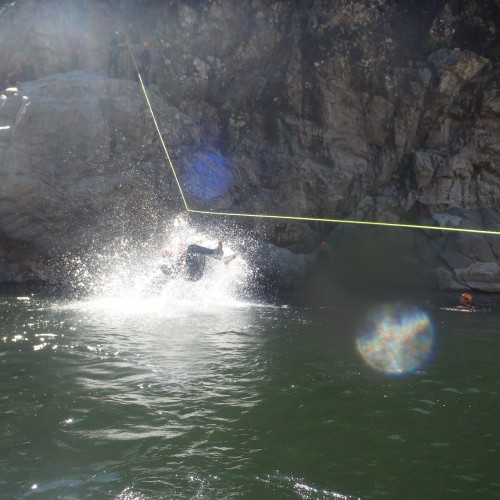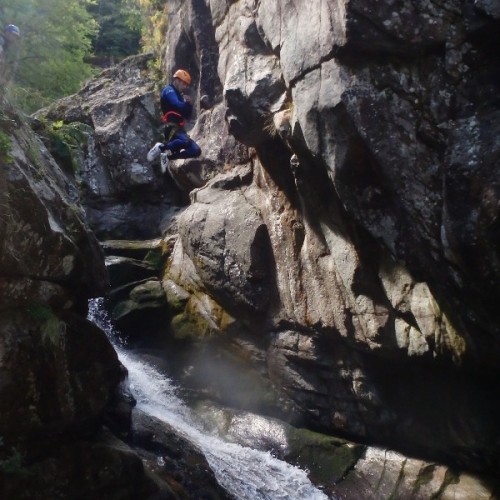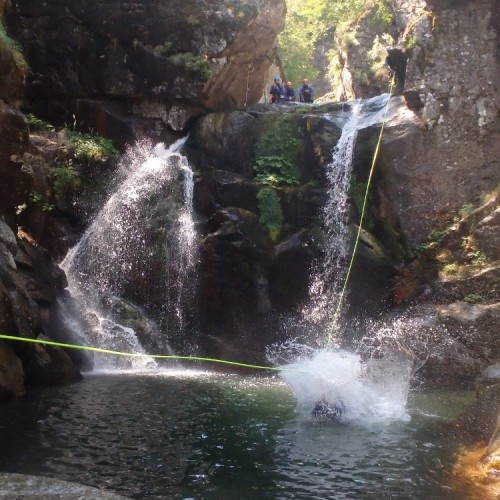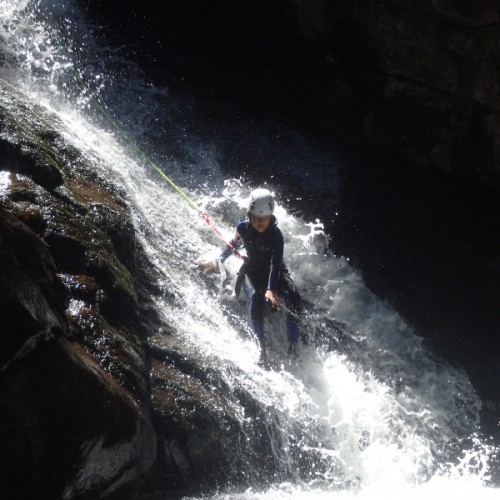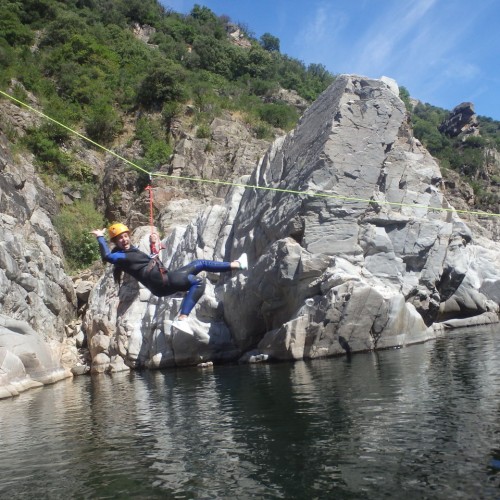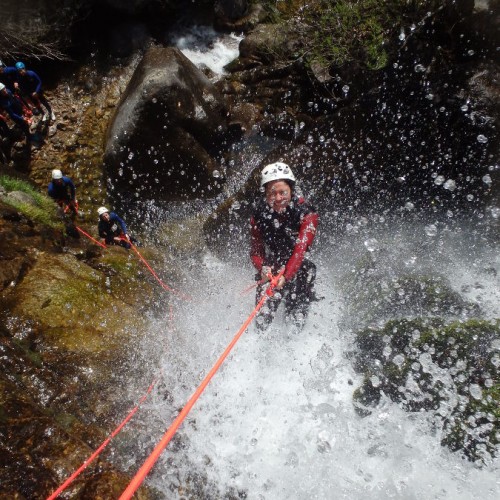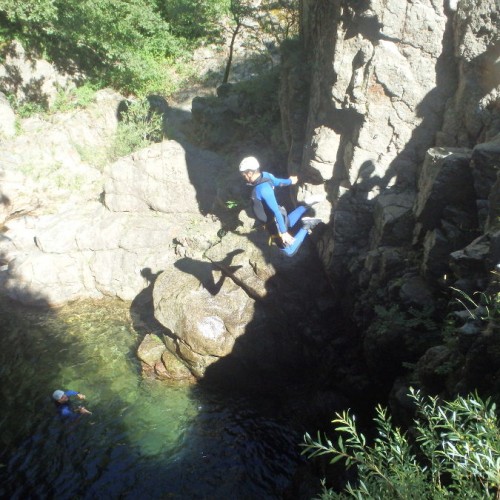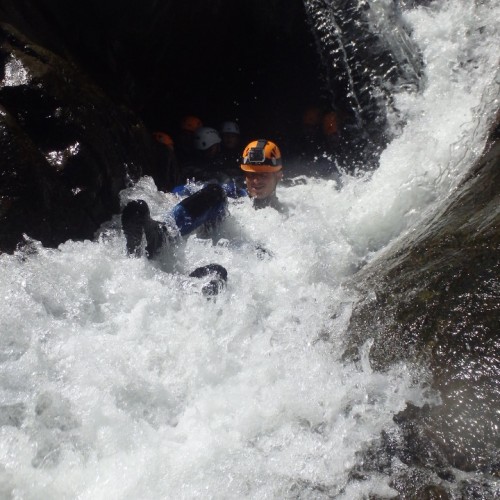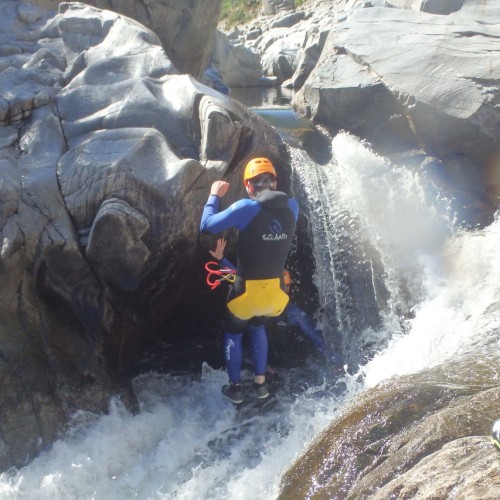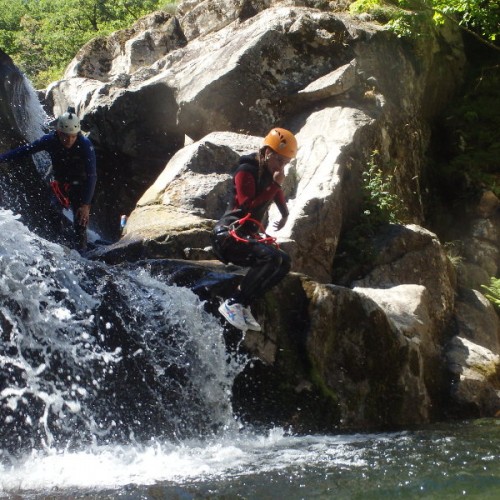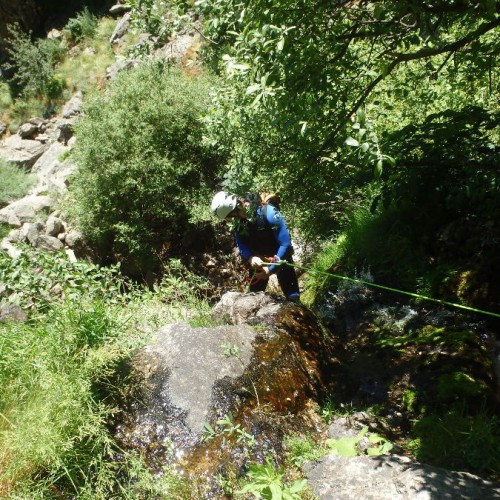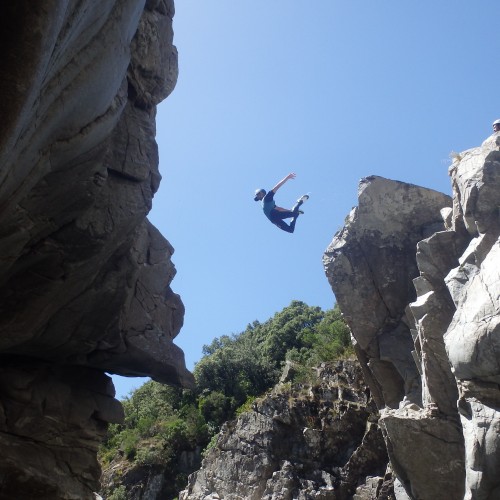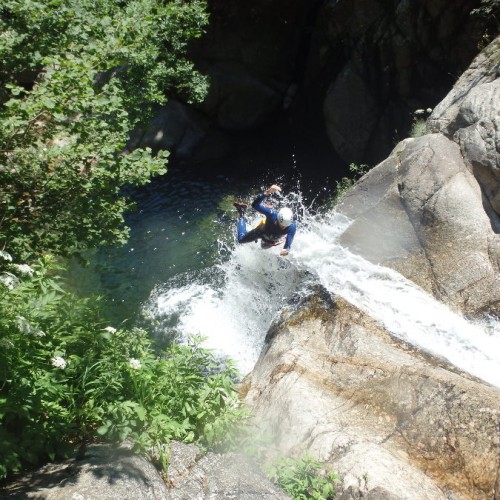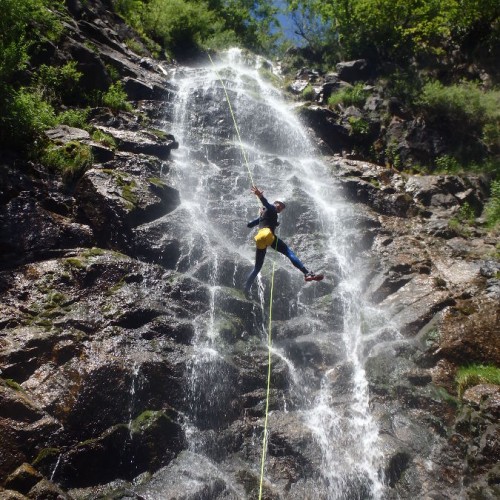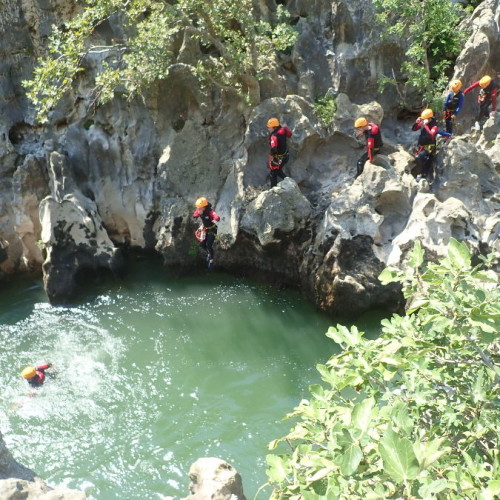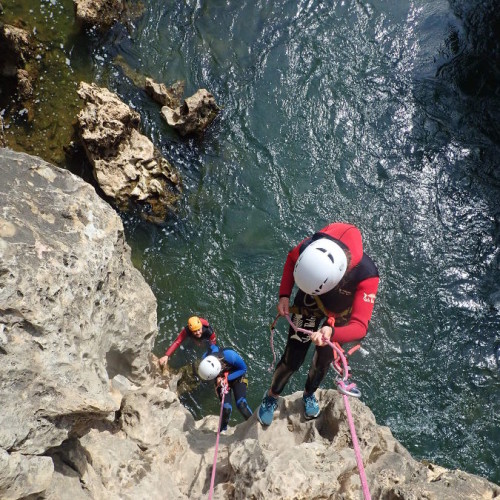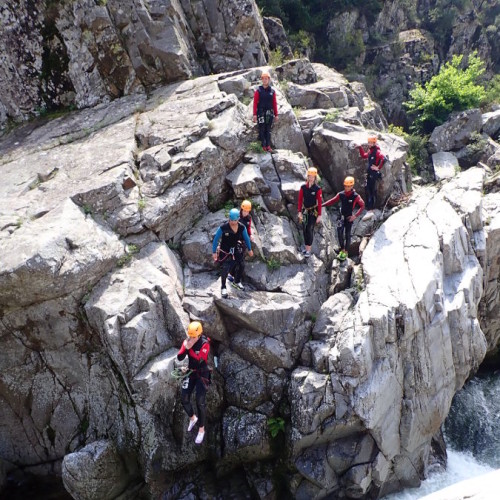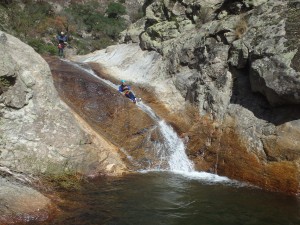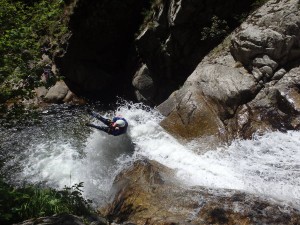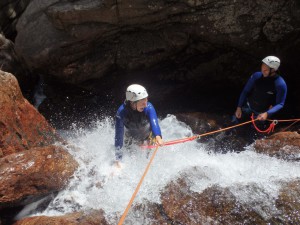Canyoning near Montpellier
The canyoning around Montpellier will take you to discover the full nature of the Hérault and Gard, through the Cévennes and the natural park of the Haut Languedoc.
The Mediterranean climate of Montpellier will allow us to practice the canyon from mid-April until mid-October.
The region is full of diverse and varied canyon. Discovery canyon to learn with family or friends, canyon more sporty for those lacking sensations. Everyone will find his account.
Near of St-Guilhem le Desert, this aquatic canyon is one of the closest to Montpellier. Ideal for discovering one of the most beautiful spots in the Hérault gorges.
Soucy Canyoning (currently closed)
Located near St-Jean du Gard, this course is ideal for an initiation or a family outdoor activities. You will discover jumps, slides and a zip line. Perfect for an initiation of canyoning.
A very beautiful aquatic canyon located in the Caroux. On the program: many slides, jumps up to 7 meters and an initiation to abseiling. For family or between friends.
Close to Montpellier, this canyon will allow you to pace the Ravin des Arcs. Discover this beautiful hike in another day. Playful and varied, to make with water.
In the heart of the Cévennes and near Mount Aigoual, this canyon is one of our favorites. Everything is there: jumps, slides, reminders and zipline splash.
Near the Vigan in the Cévennes, you will discover a wild course. A nice descent for a multitude of reminders, jumps and the famous ejectable slide.
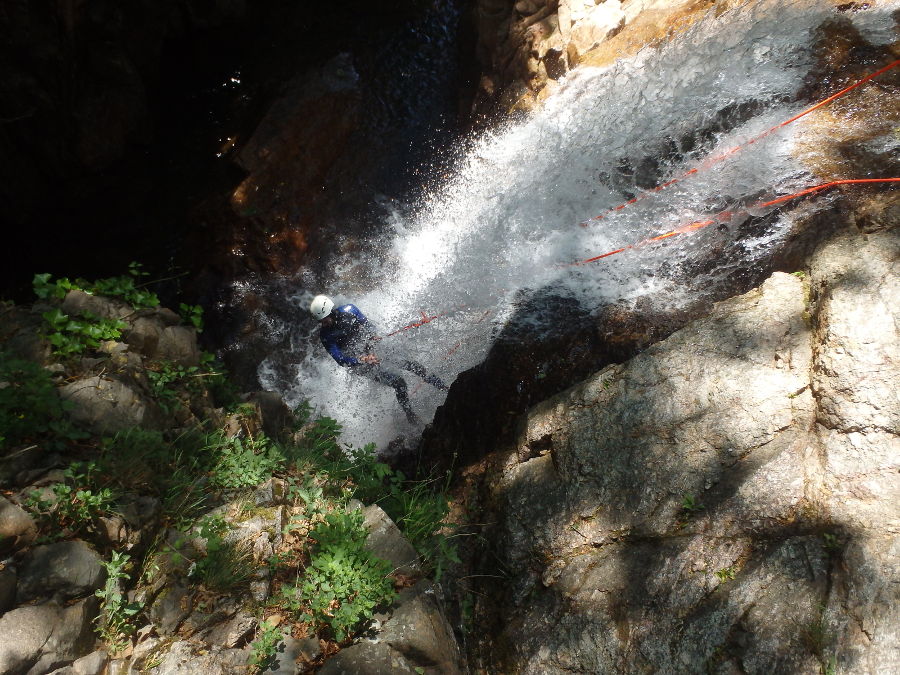
A beautiful aquatic outing in the Parc Naturel du Haut Languedoc. A sporting day in perspective with walk, abseiling of 20 meters and jumps in the heart of Caroux.
One of the wildest descents of the Cévennes. Many abseilinsg of 30 meters for the first part, then we will join the second part more playful.
One of the most beautiful canyons of the Caroux in the park of the Languedoc. In a luxuriant vegetation, we will progress in order to chain abseilings, jumps and slideway.
Herault and Gard canyons locations
Click on marker and calculate your itinerary
Organization of your canyon trip
First of all, it is necessary to contact our team in order to take a reservation. For this, you can reach us on 06 81 72 23 78 or send us an email via our “CONTACT PAGE“.
All of our canyon trips are supervised by qualified instructors. We provide you with all the necessary technical equipment: a full 5mm neoprene suit, a helmet and a harness.
You need to provide a pair of sneakers that fits at the feet (or water shoes), a swimsuit, a bottle of water (about 1.5l for 3), a snack.
The meeting point is near the canyon. This will be communicated to you by email so that you can find your monitor there. Once there, the latter will give you all the necessary equipment to equip you on site.
The duration of the canyon varies according to different criteria: level of the canyon, approach walk, return walk and nature of the group (ease in progression, number of participants …). However on average we can say this:
– For discovery canyons, the average time is 3 hours.
– For adventure canyons, the duration of the activity varies from 3h to 4h.
– And for initiated canyons, it varies from 4h30 to 6h00.
Payment is made on site in cash or by check. Please note, there are no distributors on site. It is also possible to pay by bank transfer a few days before on request.
Canyoning what is it?
Canyoning is the combination of a multitude of activities. You will walk along a stream, swimming in sumptuous river or natural pools, jumping in large basins or letting yourself be carried by the current and sliding on natural slides. When the canyon becomes less accessible and to continue our expedition, we will progress in abseiling under cascades ranging from 5 to 30 m.
Canyoning near Montpellier in Hérault and Gard
It is in Hérault and Gard that we will offer you a cocktail of thrills and atypical, through fun and varied courses. You will discover the surroundings of Montpellier and our regions by aerial workshops and sweeps in the brow. A beautiful discovery of the massif of Cévennes and Caroux.
The diversity of our canyon, scattered throughout Occitanie, allows us to adapt our outings to the budget and capacity of each.
Outdoor activities with family or friends
From water hiking, canyoning initiation to the big, sportier race, be sure to come back loaded with strong memories with refreshing emotions.
If the words slideway, abseiling, jump, waterfall, basin evoke for you the adventure, throw yourself in the water. You will share an unforgettable moment with friends or family.
Each activities includes: a certified guide, a full neoprene wetsuit and neoprene socks, a helmet, a shoulder belt, a watertight can.
Canyoning and aquatic hike around Montpellier
What is the difference between canyoning and aquatic hiking? We can dissociate these 2 outdoor activities by the nature of the route and its accessibility.
In canyoning, the progression is often done on a vertical plane in streams collected with an uneven profile. It is not always possible to get around obstacles on foot. In order to cross these, the use of the rope is necessary in order to perform an abseiling. For a more fun crossing, it is possible to jump, zip line or slide if the profile allows.
For aquatic hike, the progression takes place in a rather horizontal plan and in less confined places, like a river. All obstacles are bypassed and jumps are not compulsory. This does not preclude the use of the rope to offer abseils and other zip lines. The progression is simply easier and adapts well to heterogeneous groups.
History of canyoning
It is difficult to make a precise history of the beginnings of canyoning. Indeed, men have always appreciated these shaded places in order to bathe and enjoy the tranquility of the place. In addition, many reckless fishermen and footwear have entered these gorges to find game.
We can, however, locate the first canyon explorations towards the end of the 19th century. Recall that at the beginning these explorations did not have the playfulness that we know today. Initially these expeditions had a scientific or utility purpose. At this time the conditions for progress are heavy with material. There was obviously not all the material that we know today: Harness, descender, wetsuit, canyons shoes, blockers … This one consisted of heavy speleo scales, swing, boats and other canoes.
The first pioneers were speleologists and this practice was similar to “open caving”. Among them are Edouard-Alfred Martel and Armand Jamet. In 1888, Edouard-Alfred Martel carried out in the Cévennes national park, the descent of the underground river which crosses the Bramabiau cave. In 1893, it was Armand Jamet‘s turn to make himself known by exploring the Artuby canyon in the Verdon.
At the start of the 20th century, these two speleologists carried out two descents that would be talked about. The first in 1905 with the complete descent of the great canyon of Verdon in 4 days, and the second in 1906 with the descent of the clue of Daluis in the Var valley, in the Alpes-Maritimes. In the same year, Martel attempted the descent of the Aiglun clue in the Esteron valley (Alpes-Maritimes). However, he had to give up and it was not until 1928 that it was carried out in 2 stages by Jacques MOREAU.
Between 1902 and 1904, Lucien Briet went to the Pyrenees in Sierra de Guara to explore the valleys and canyons gorges. He will bring back from these different stays many photo snapshots, write articles and give lectures, in order to discover the famous canyons of the Sierra de Guara that he was the first to discover.
With the modernization of the equipment, explorations, openings and canyon descents have multiplied. In the period from 1950 to 1980 many firsts were born. In particular, the discovery of certain massifs, such as the Sierra de Guara in Spain. In the 1980s, canyoning democratized in order to take the status of outdoor sport, practiced and more or less clearly identified by the general public.
The activity exploded in the 90s, with the supervision of the activity by guides. In the past, the state-certified instructors specialized in climbing or caving are qualified to supervise canyoning, as well as mountain guides and certain mountain guides. In 2010, a Canyoning State Diploma was created in France allowing the activity to officially graduate.

